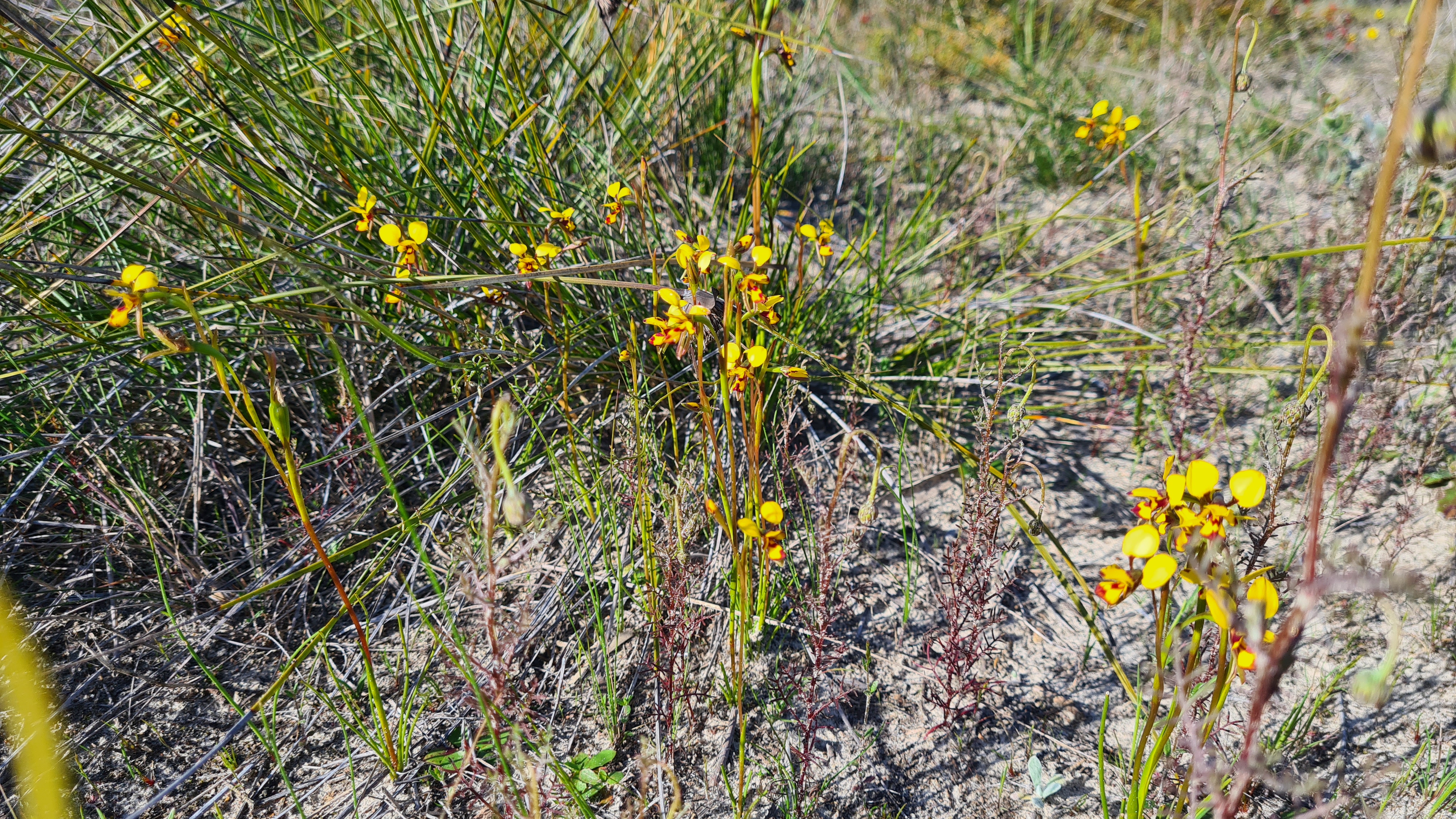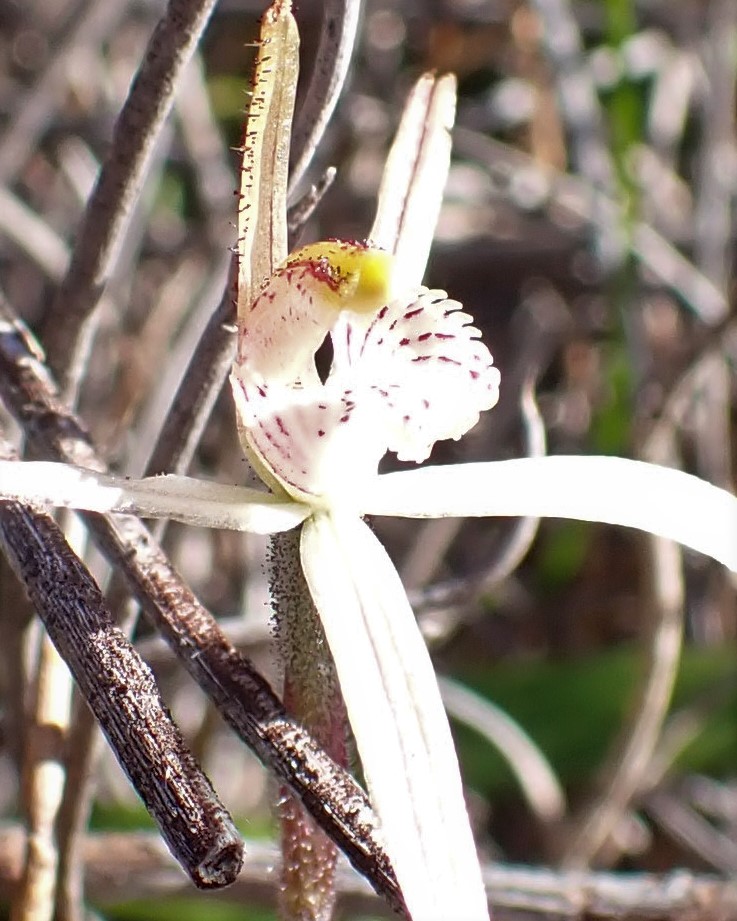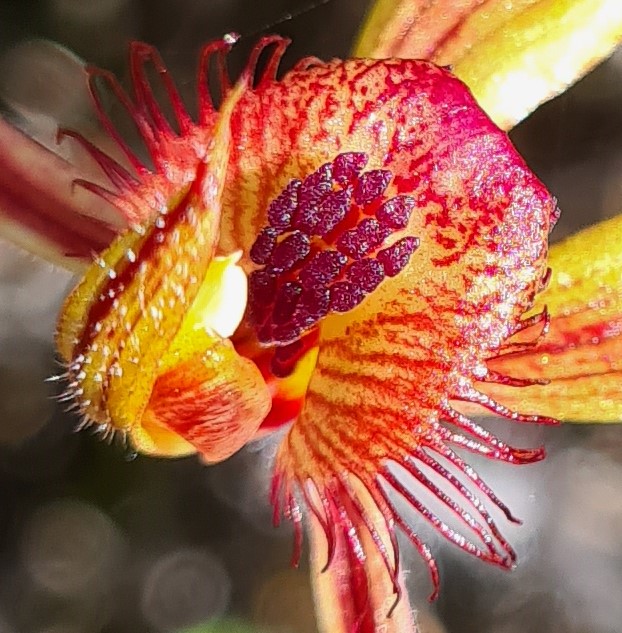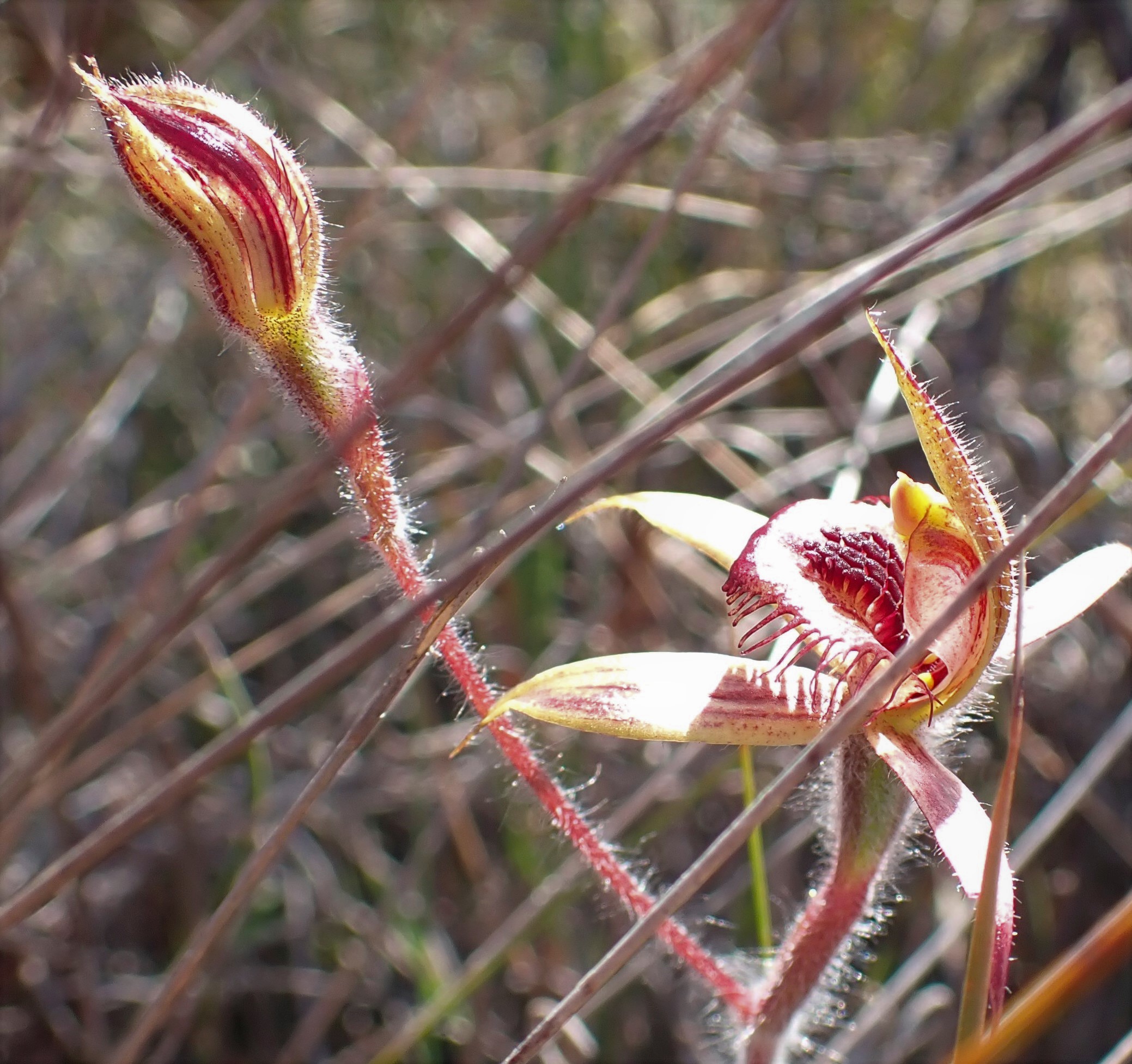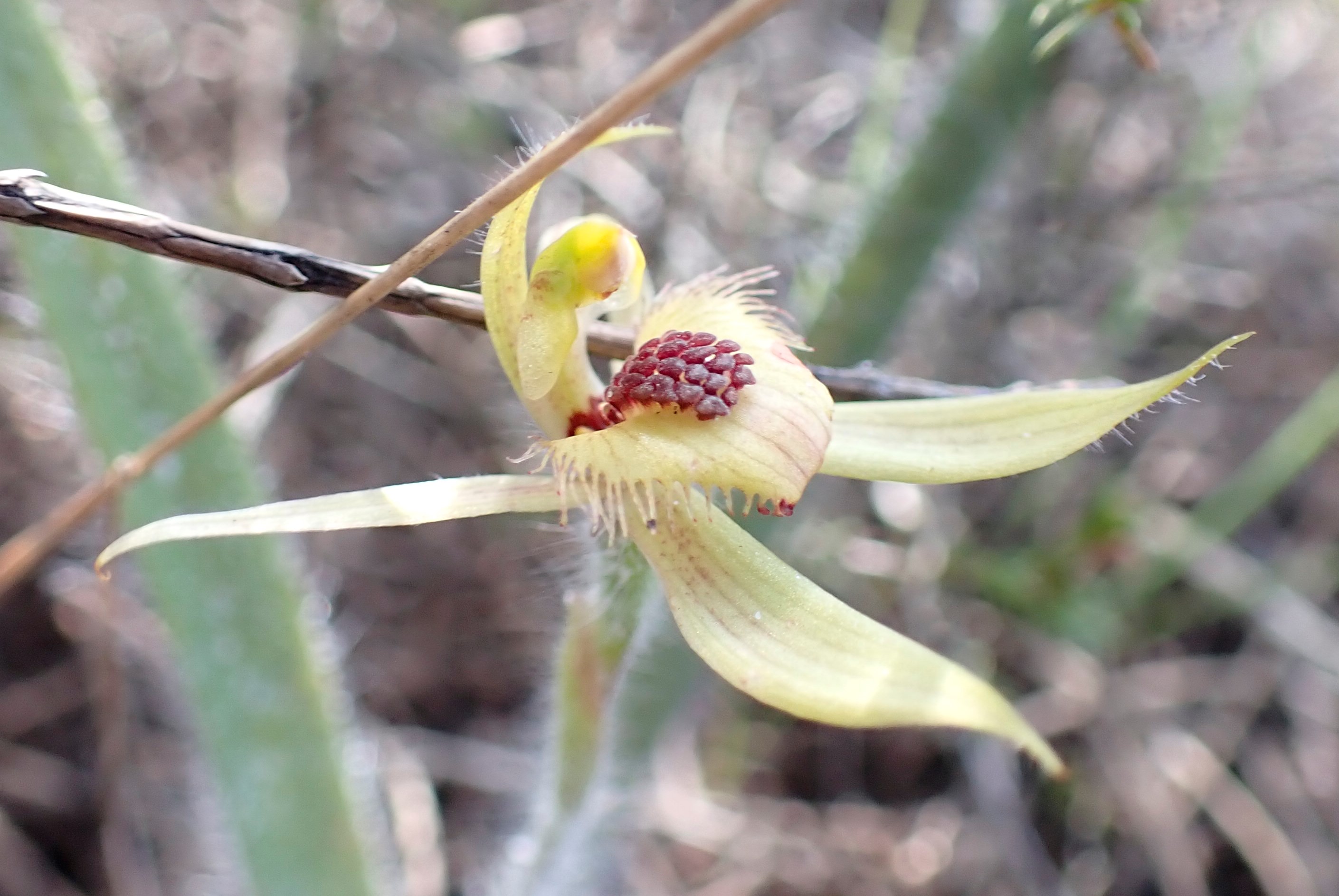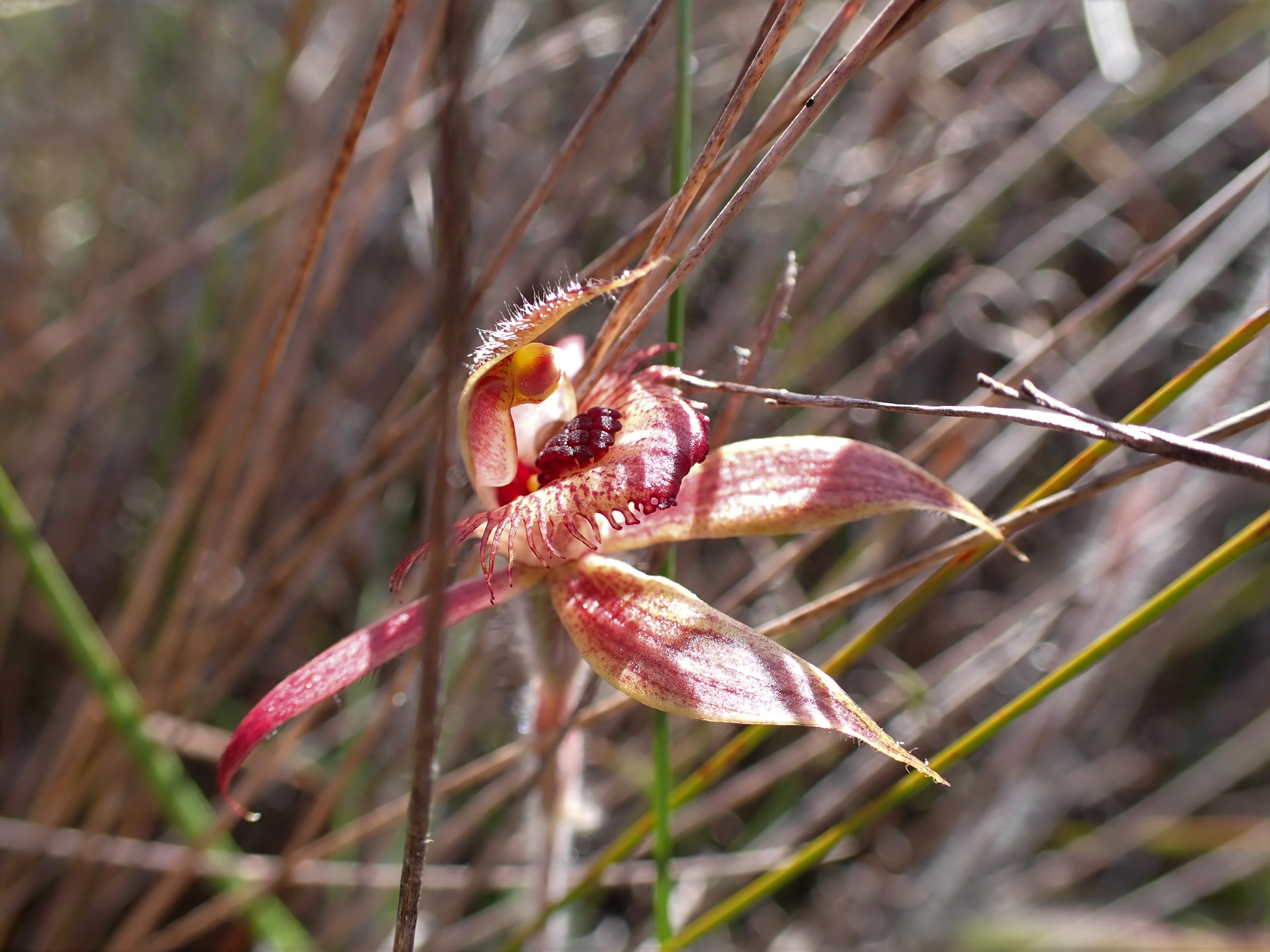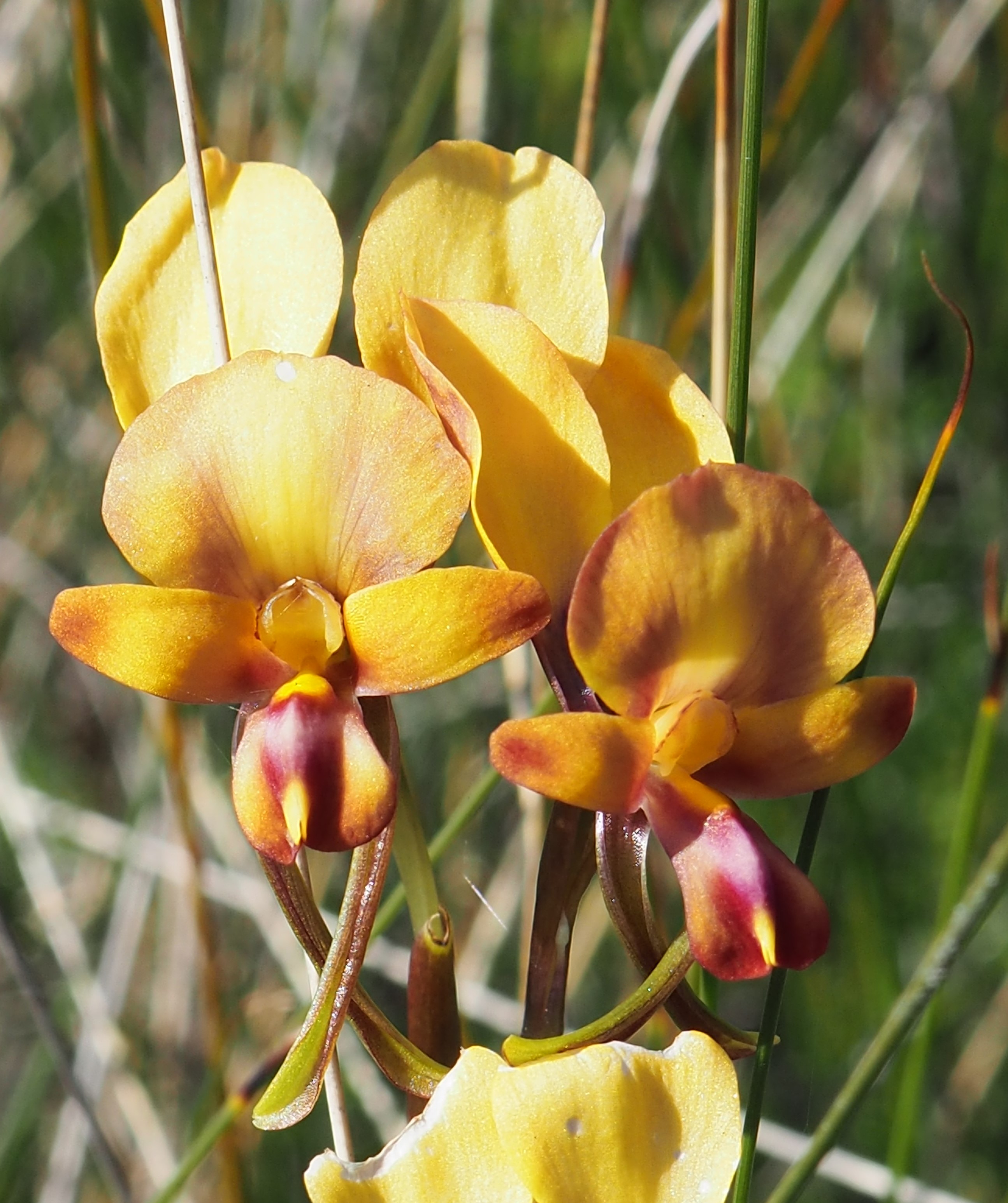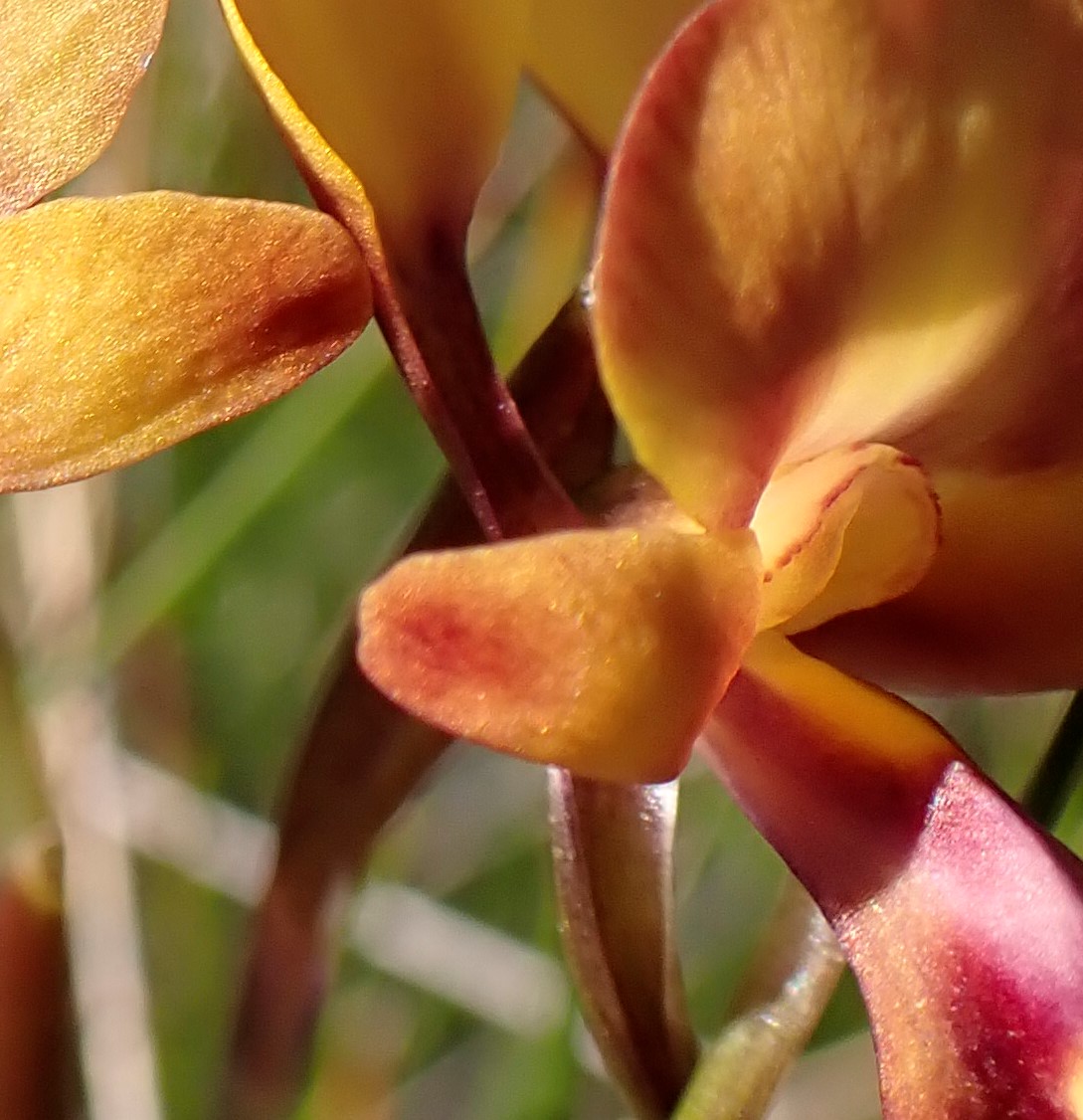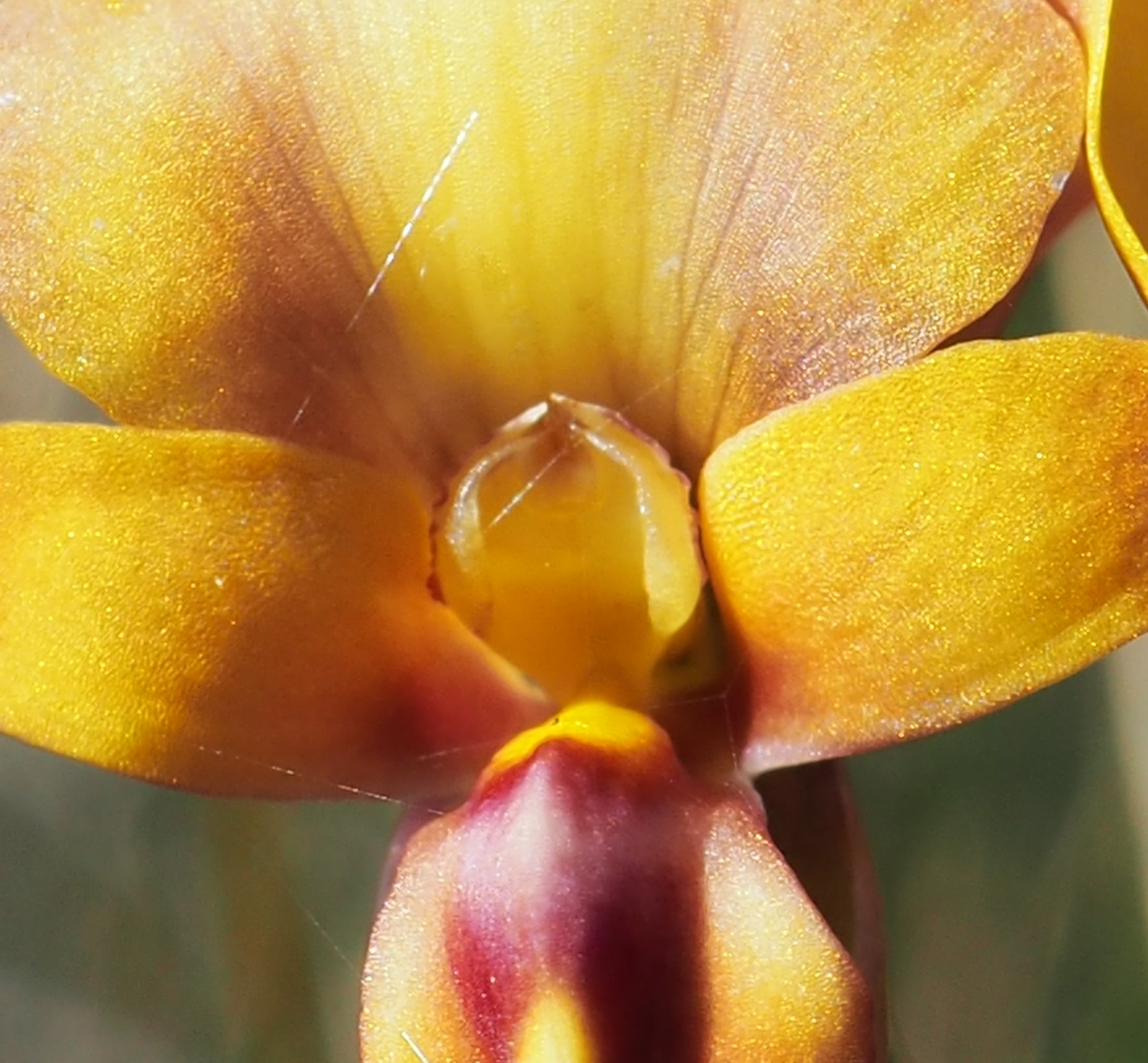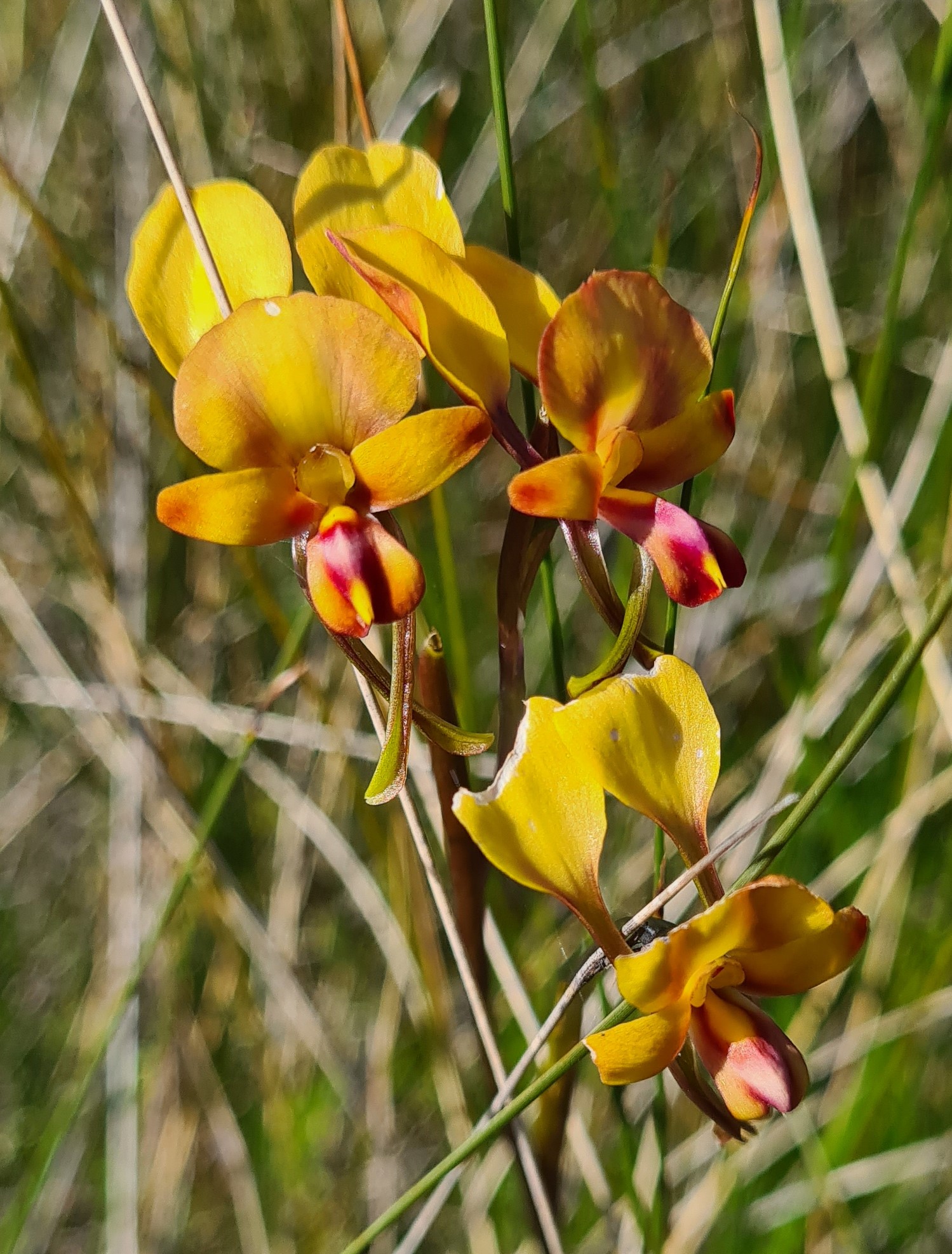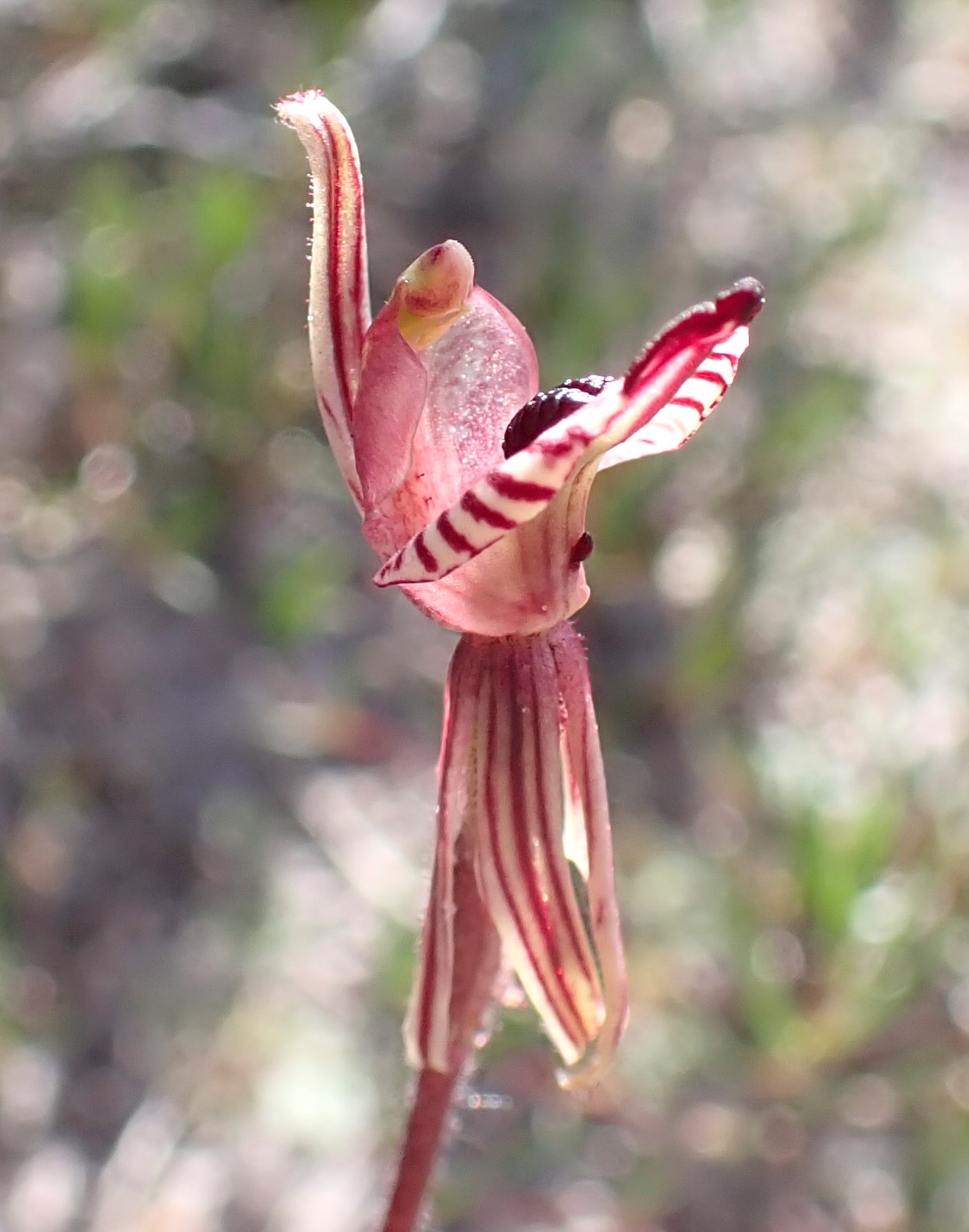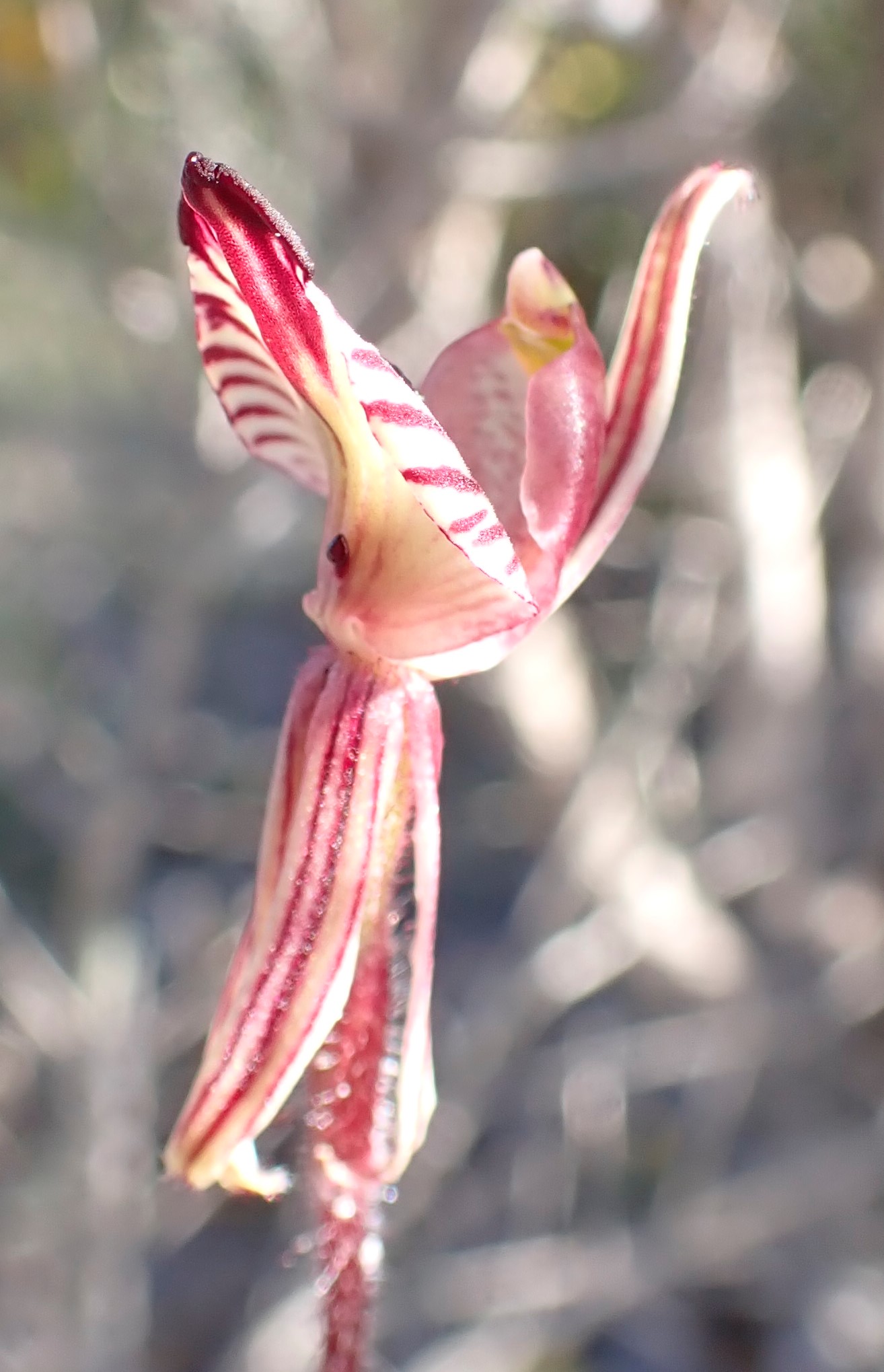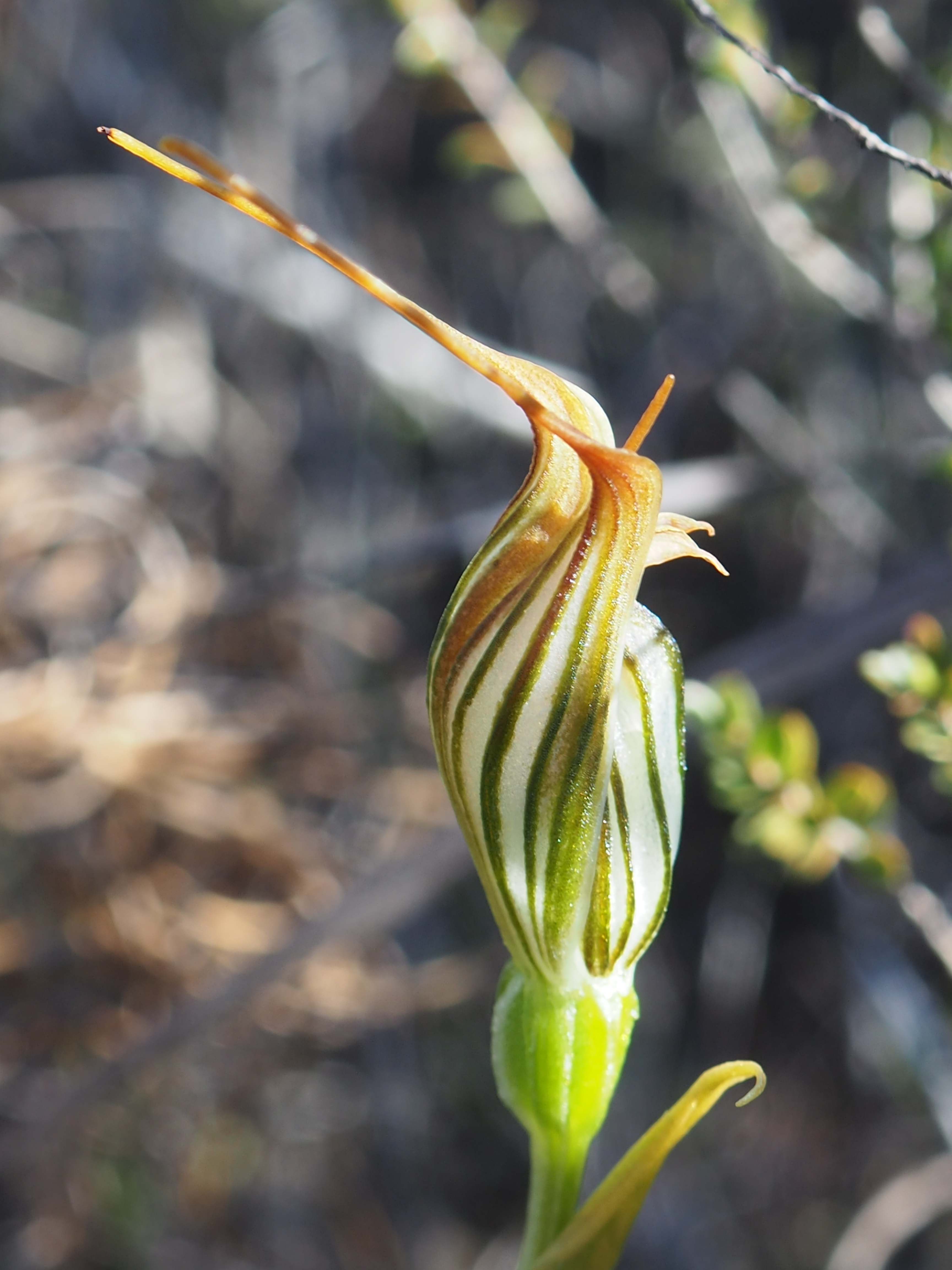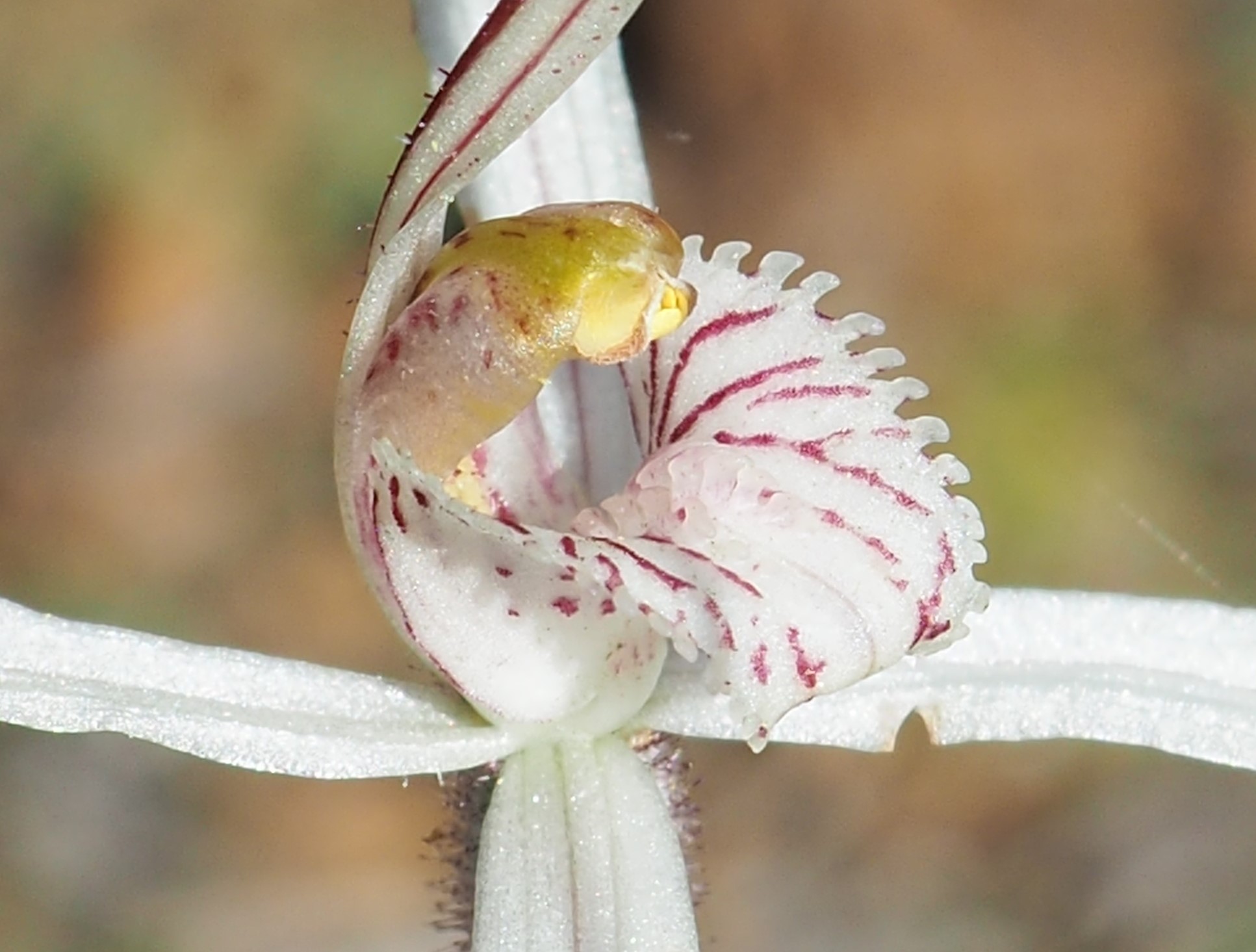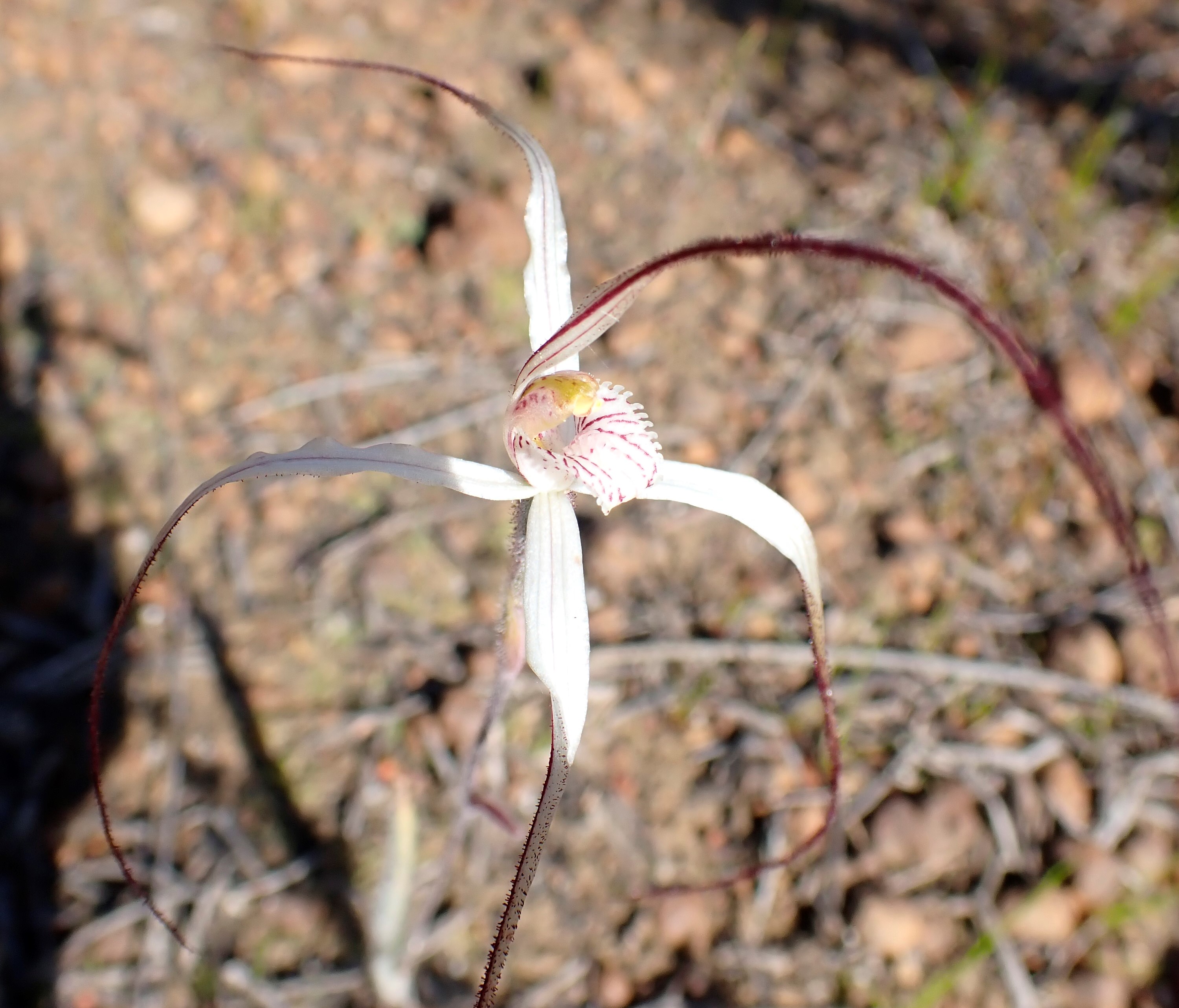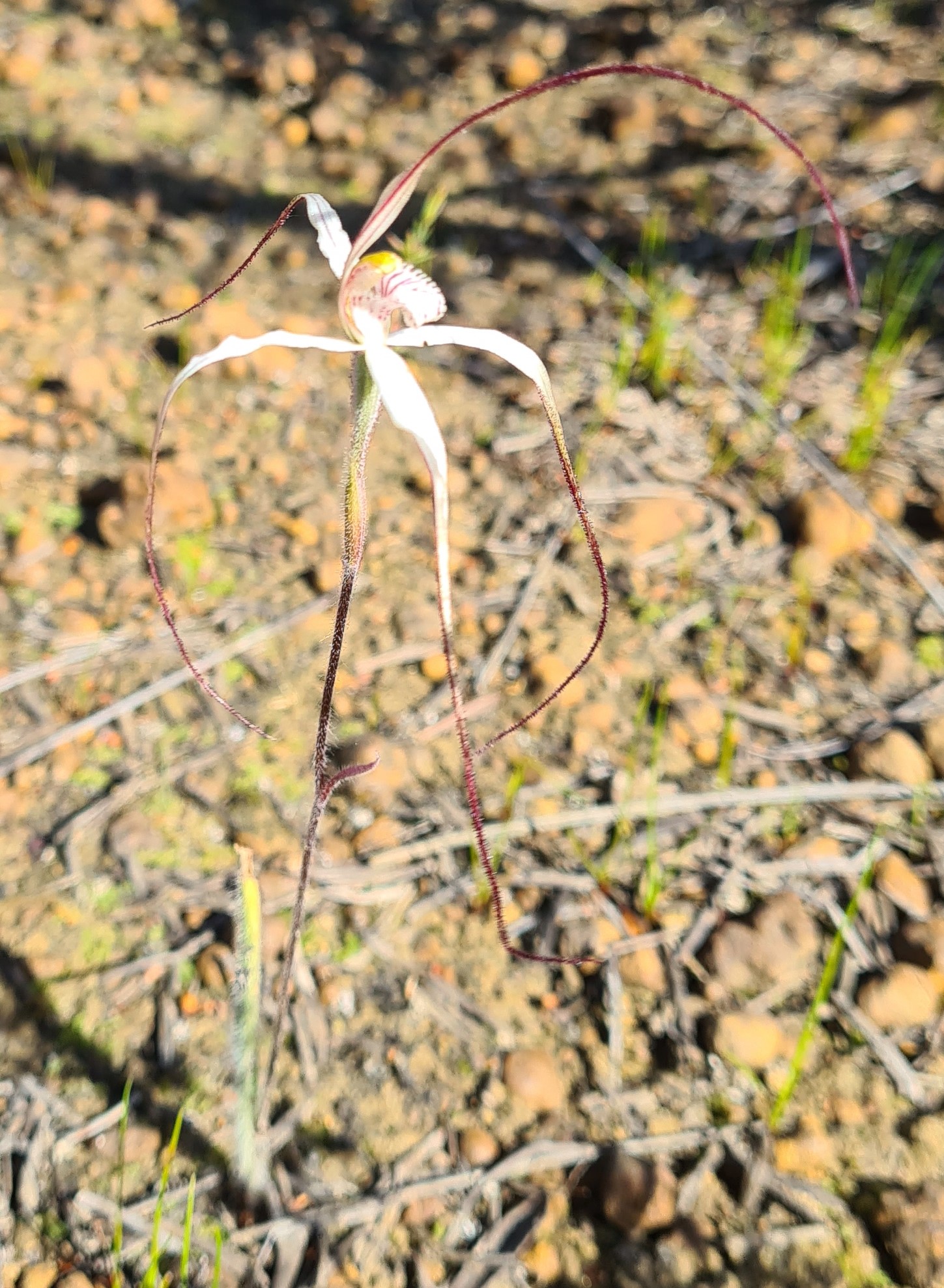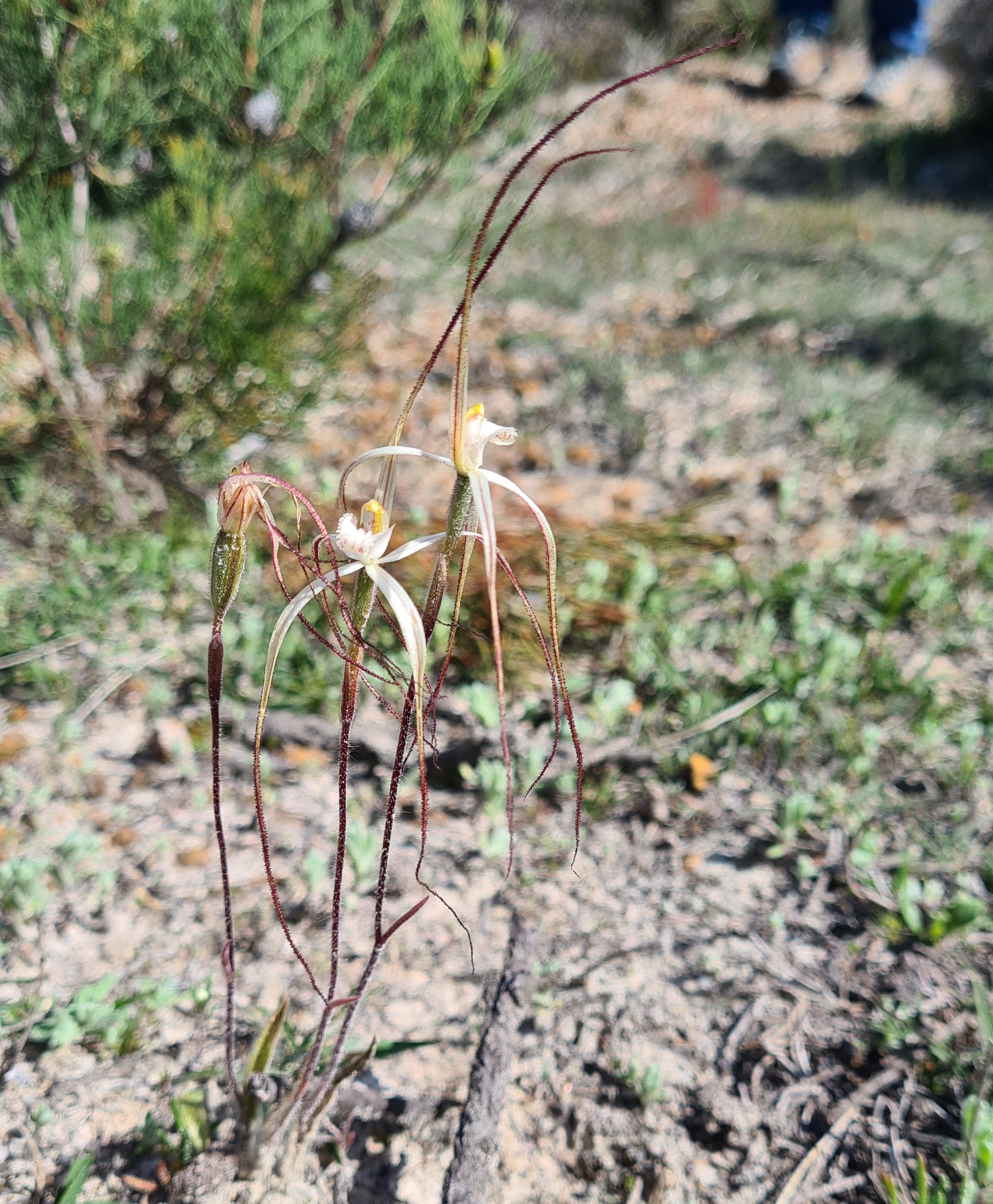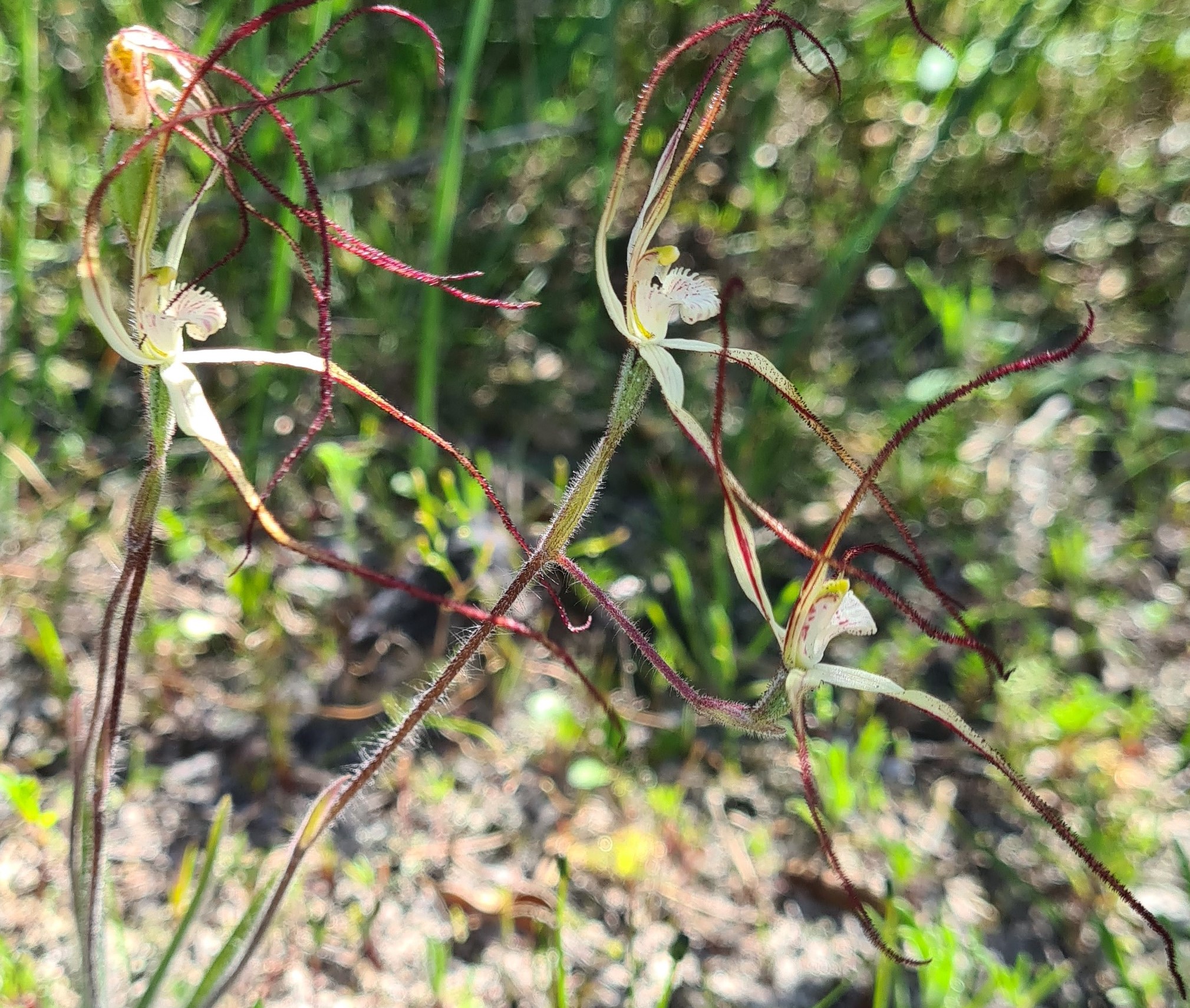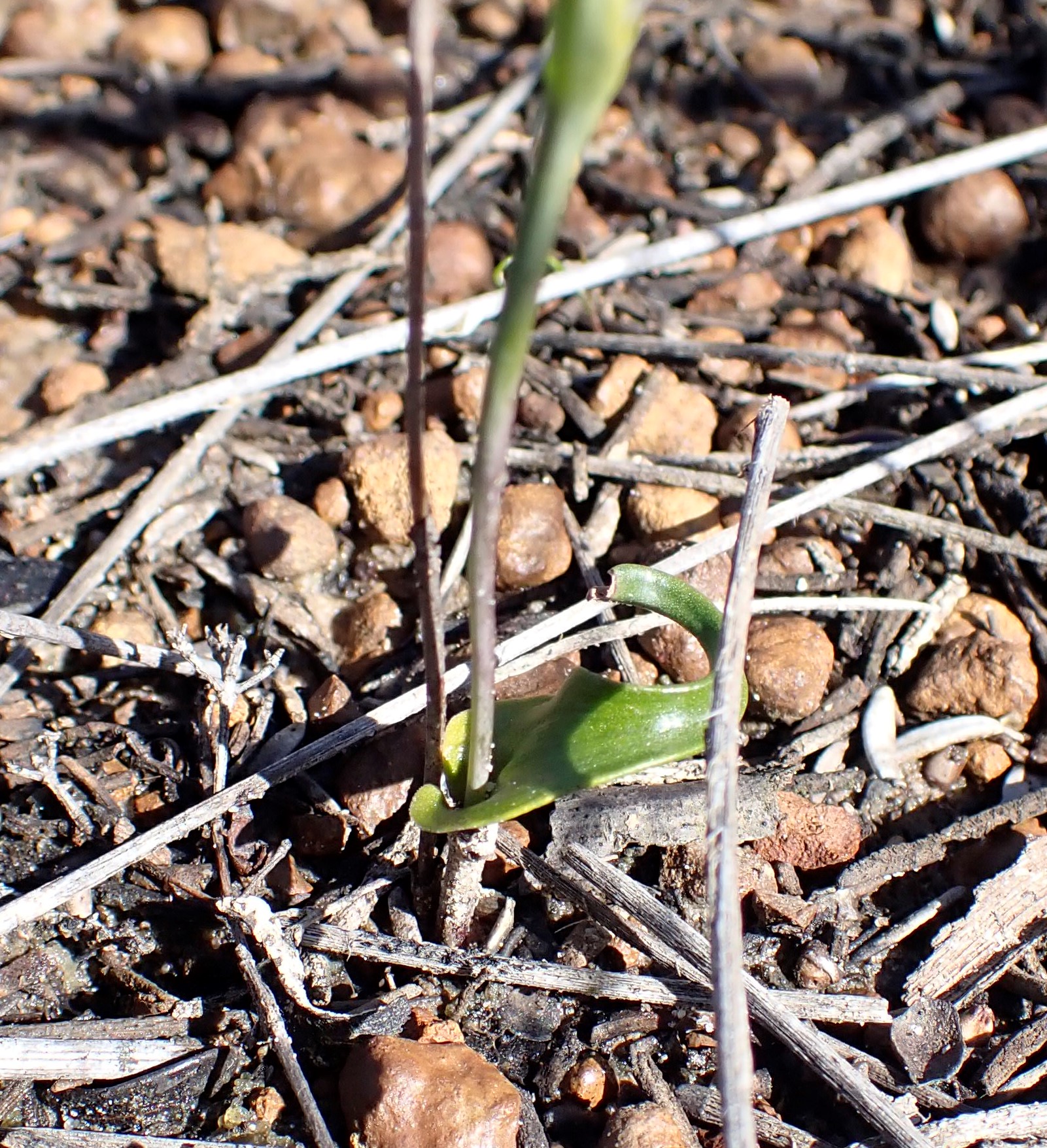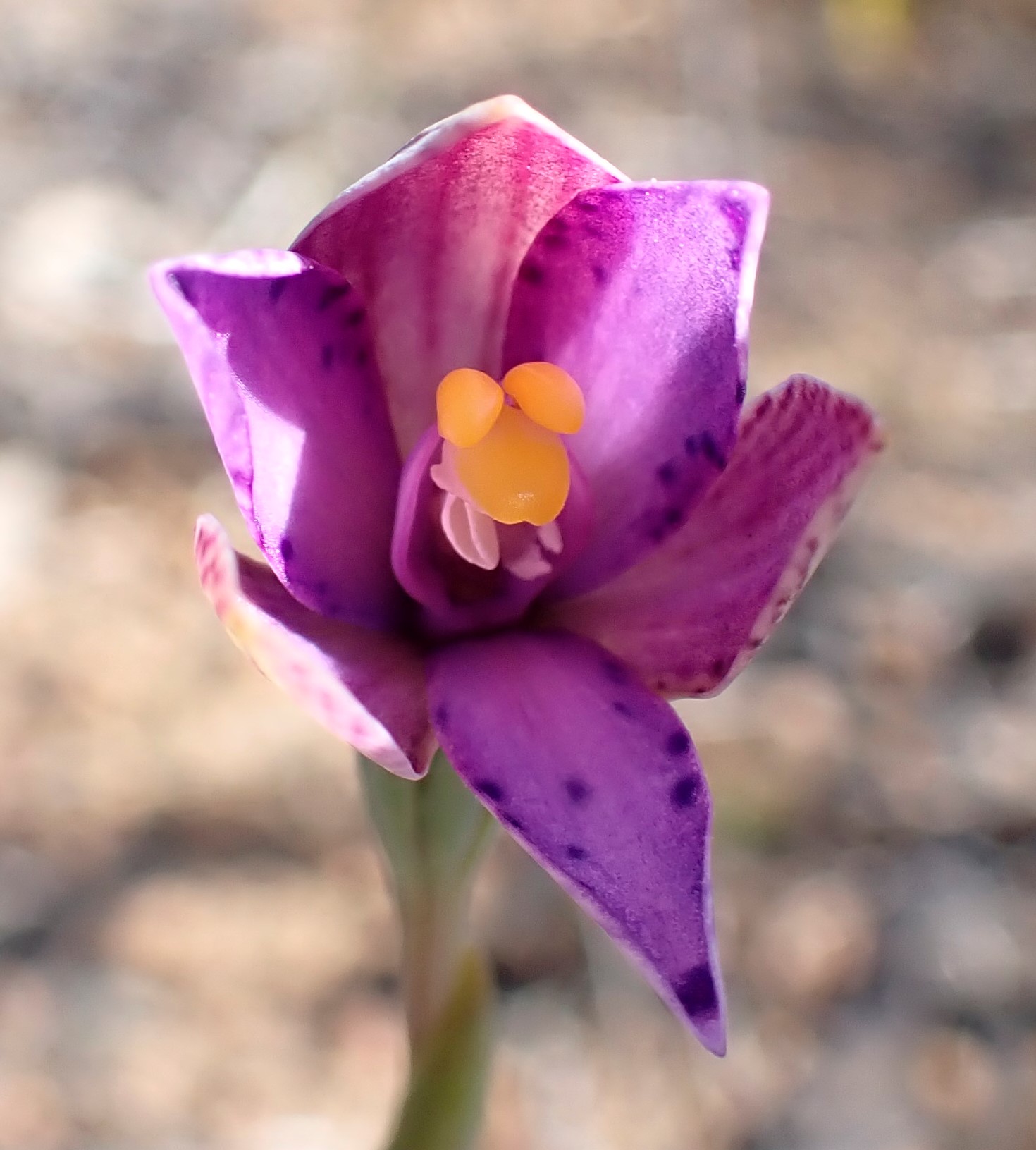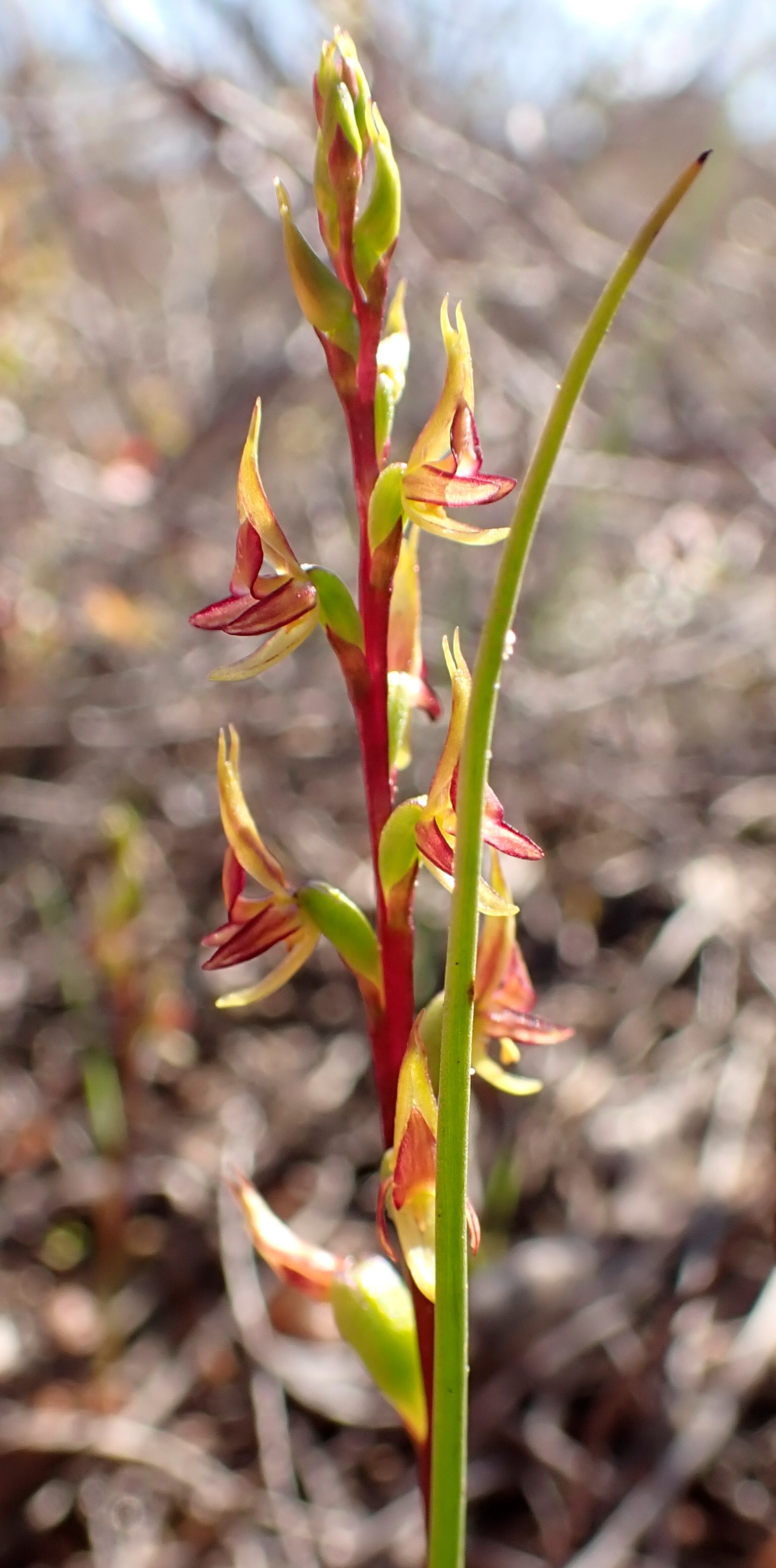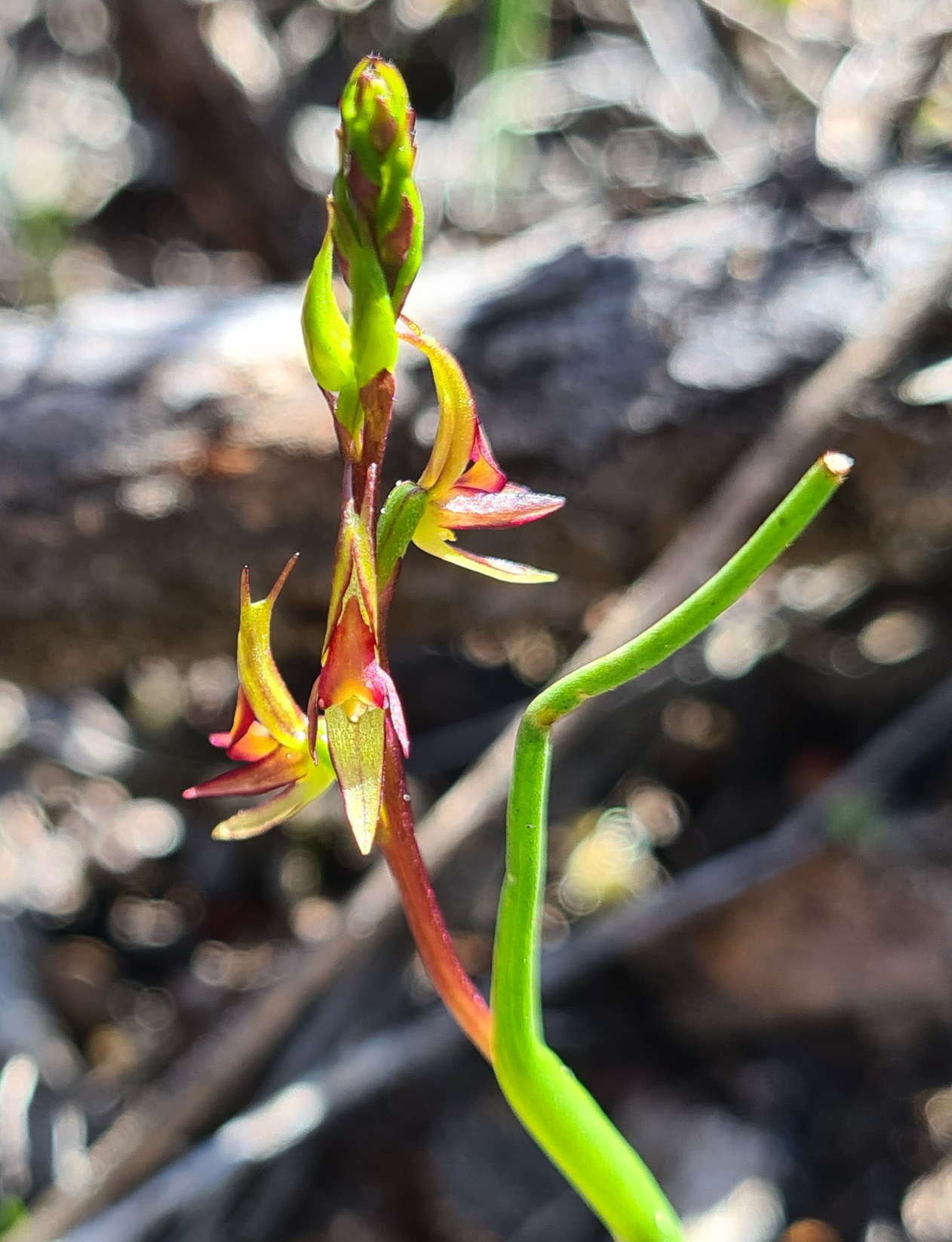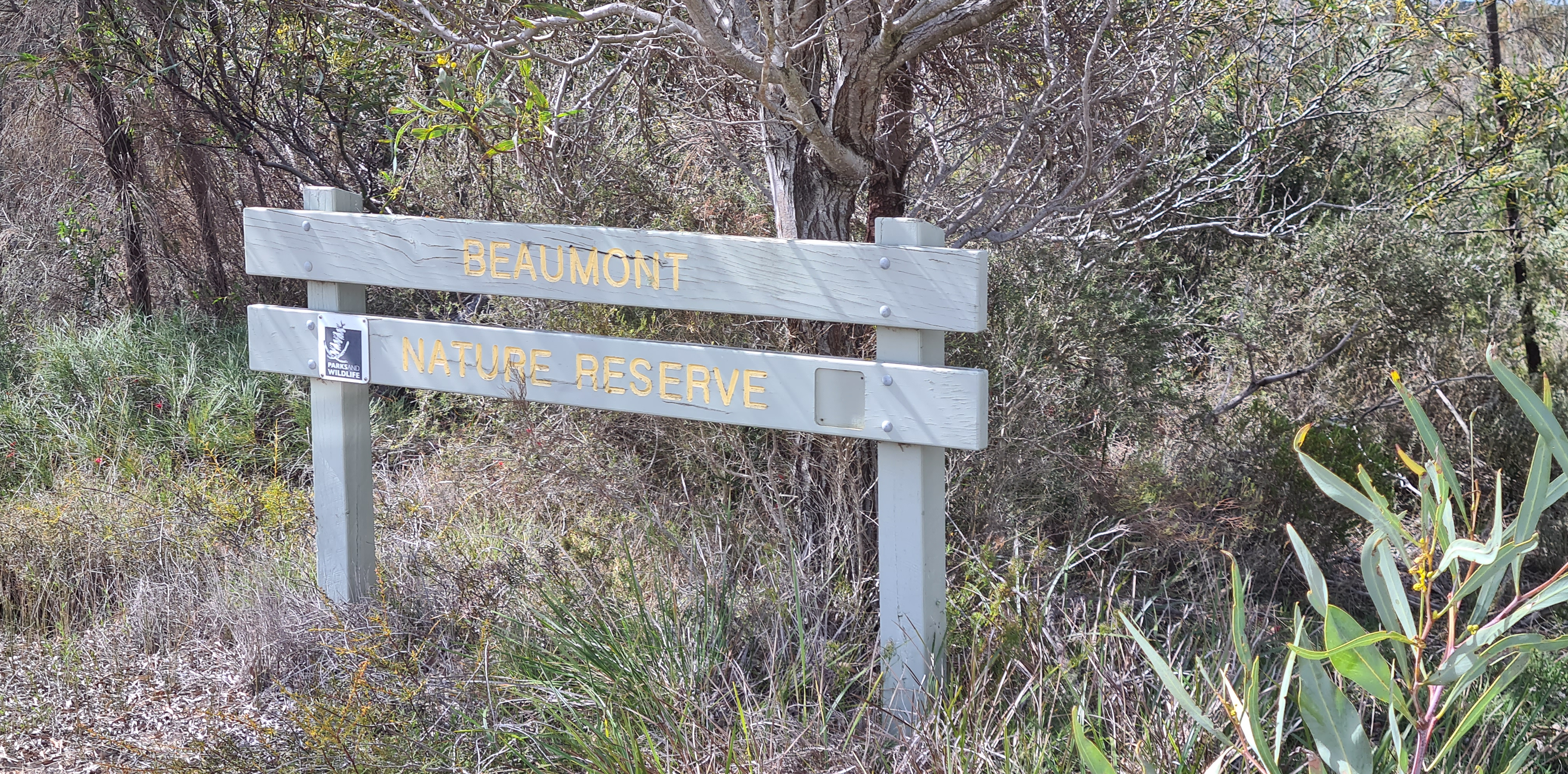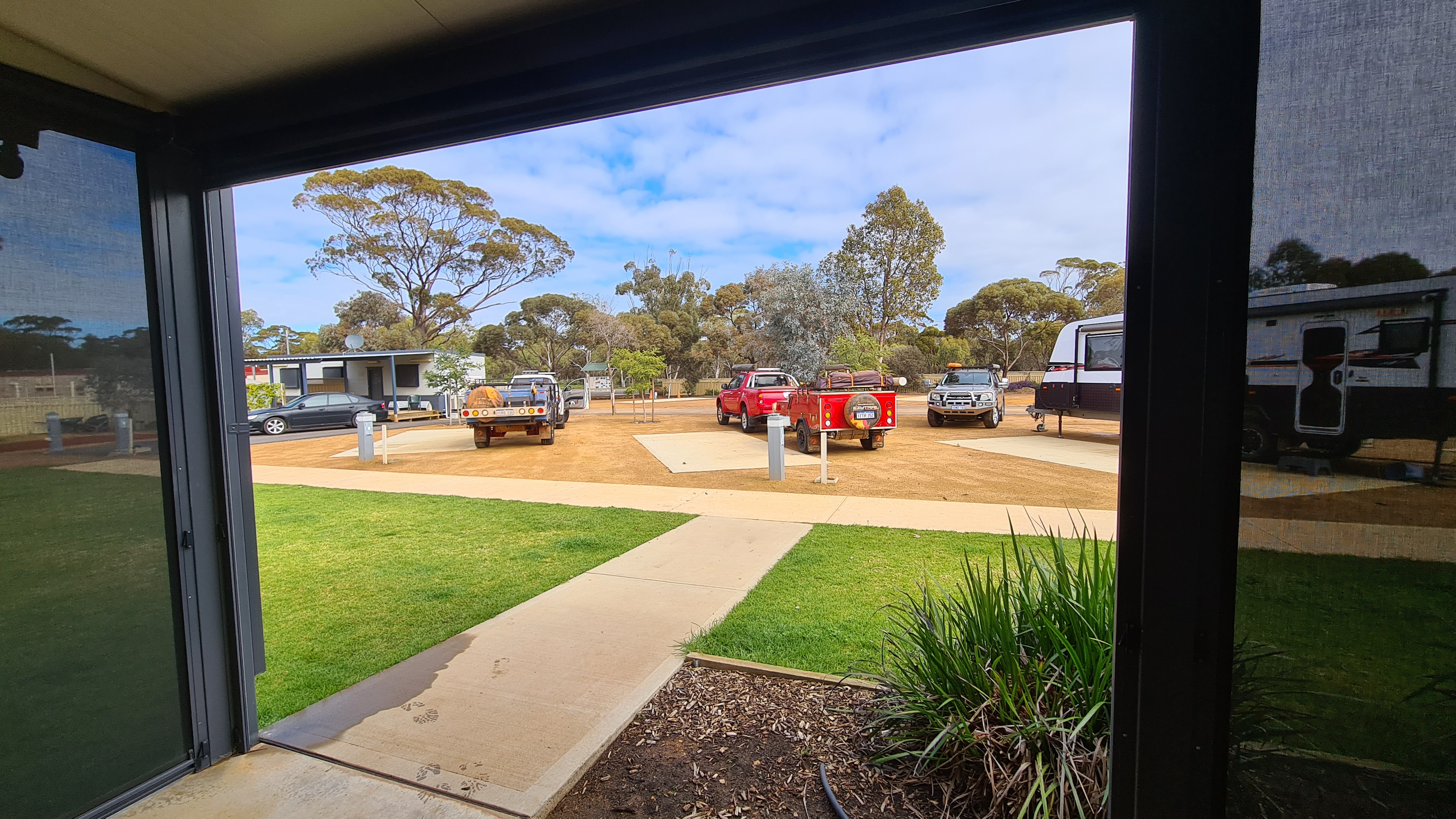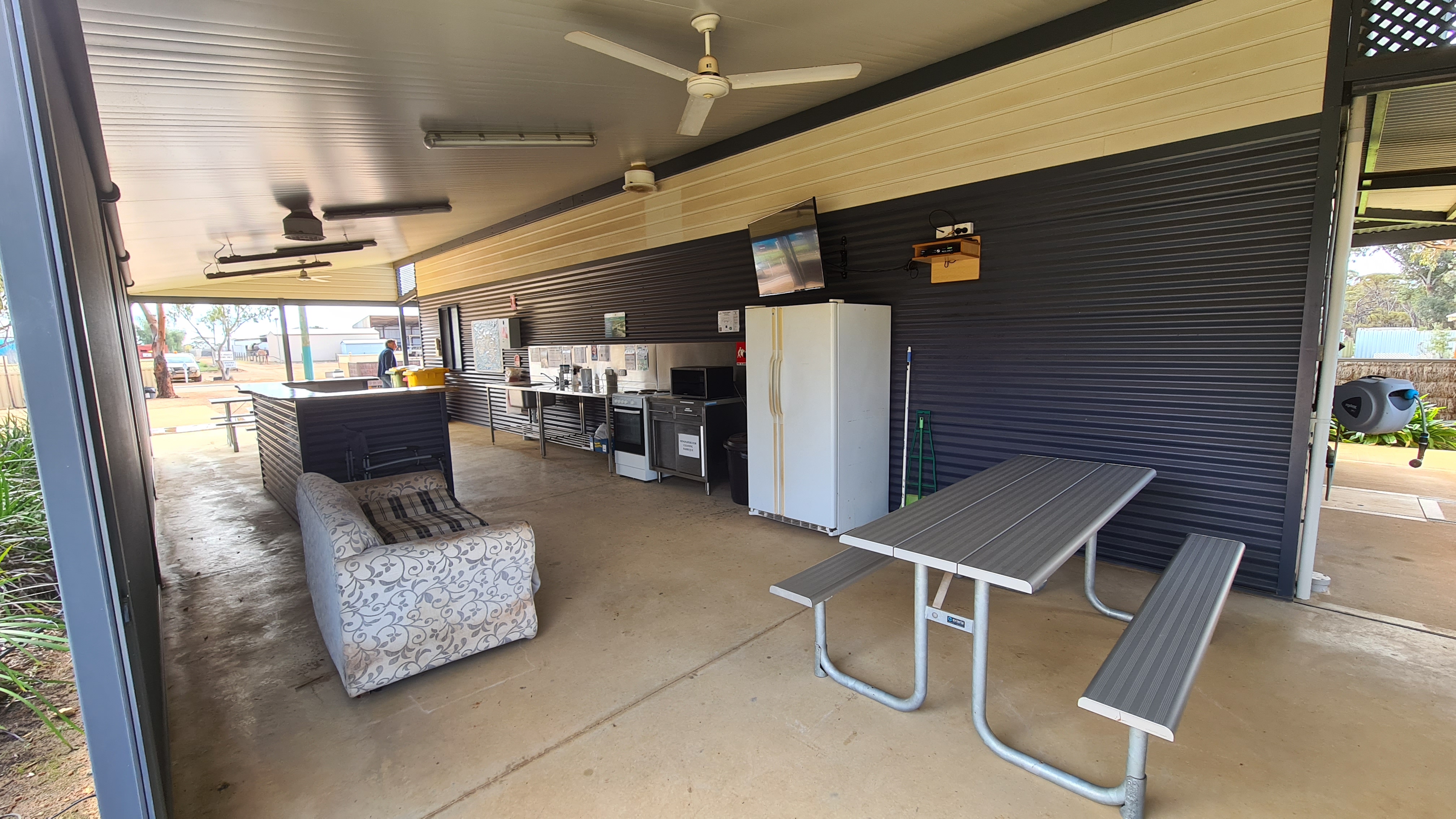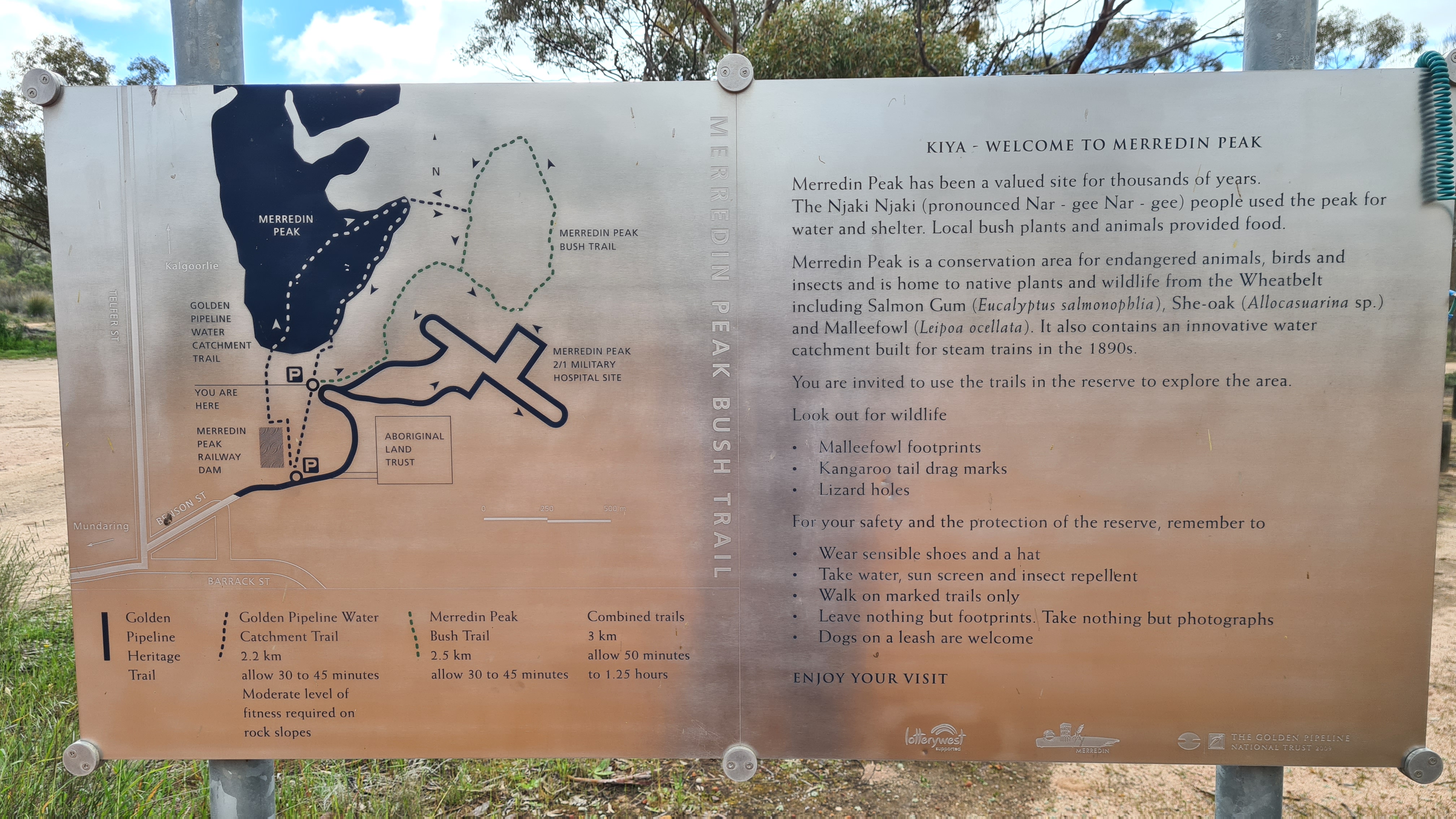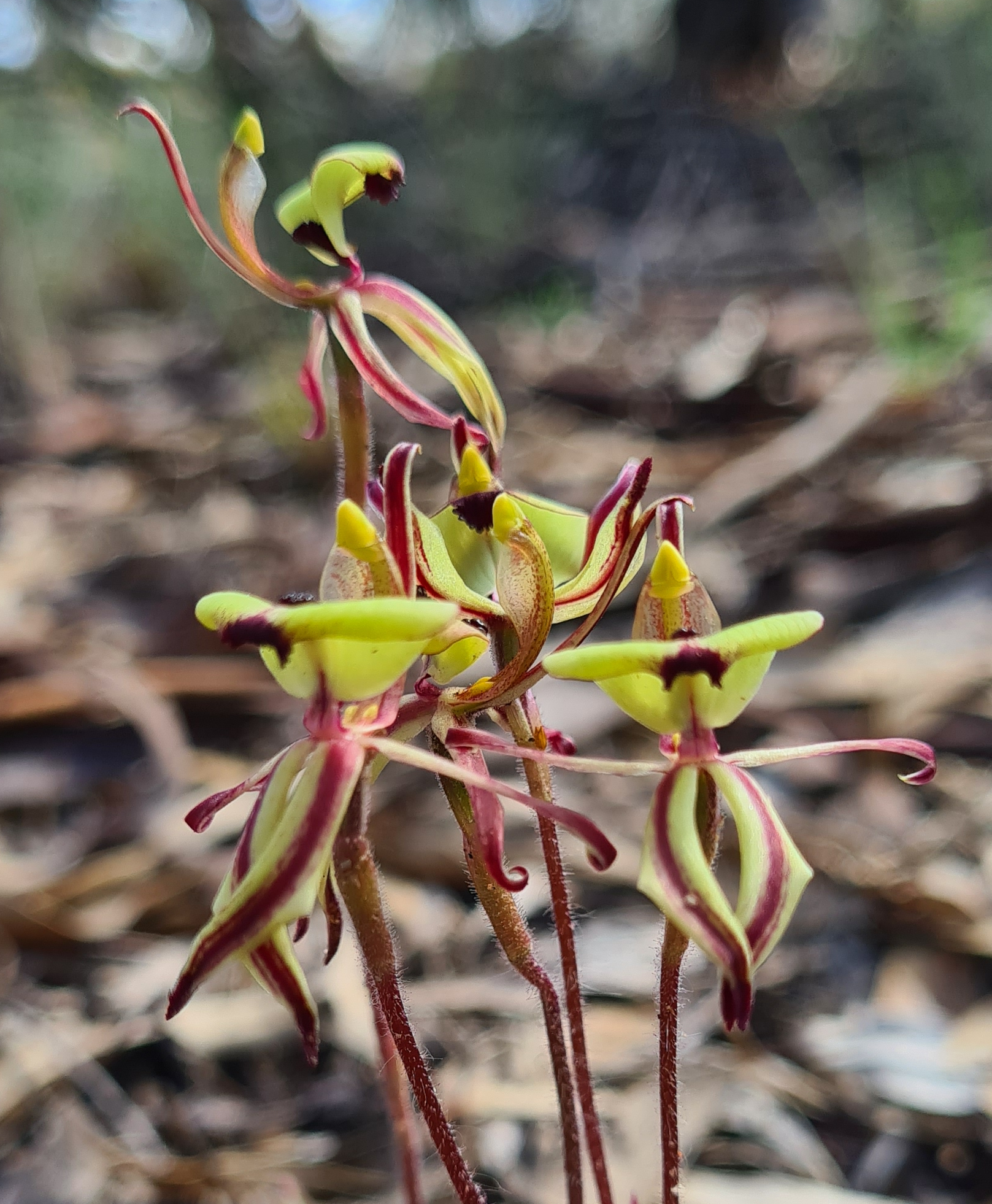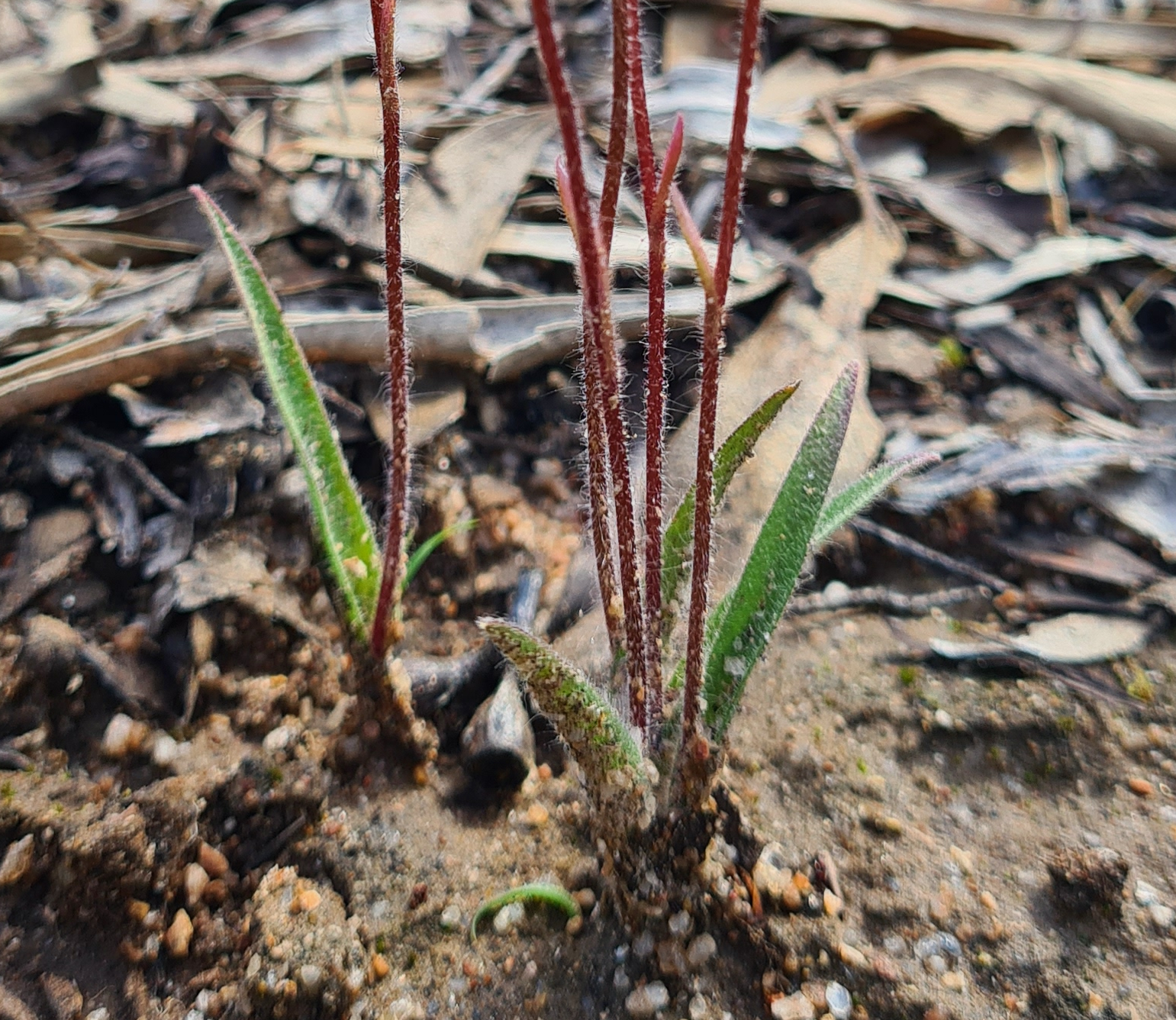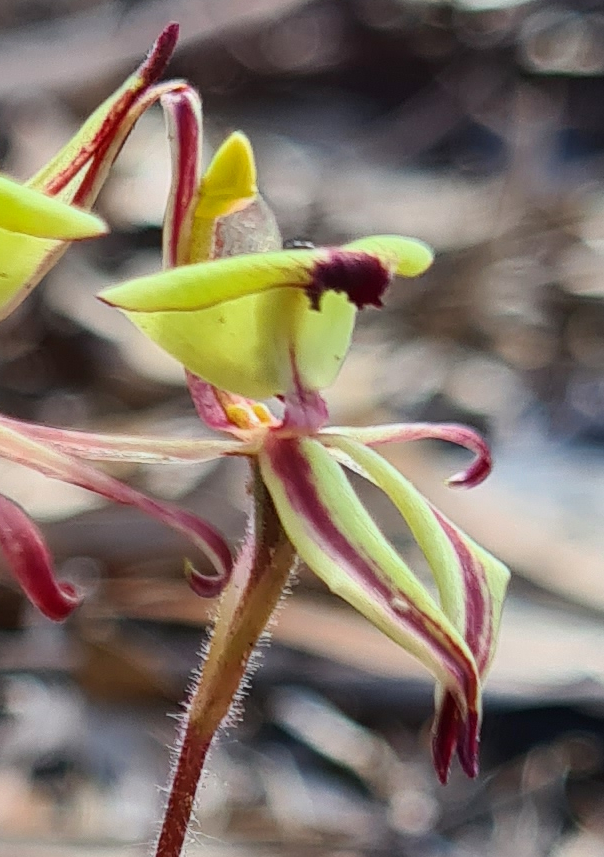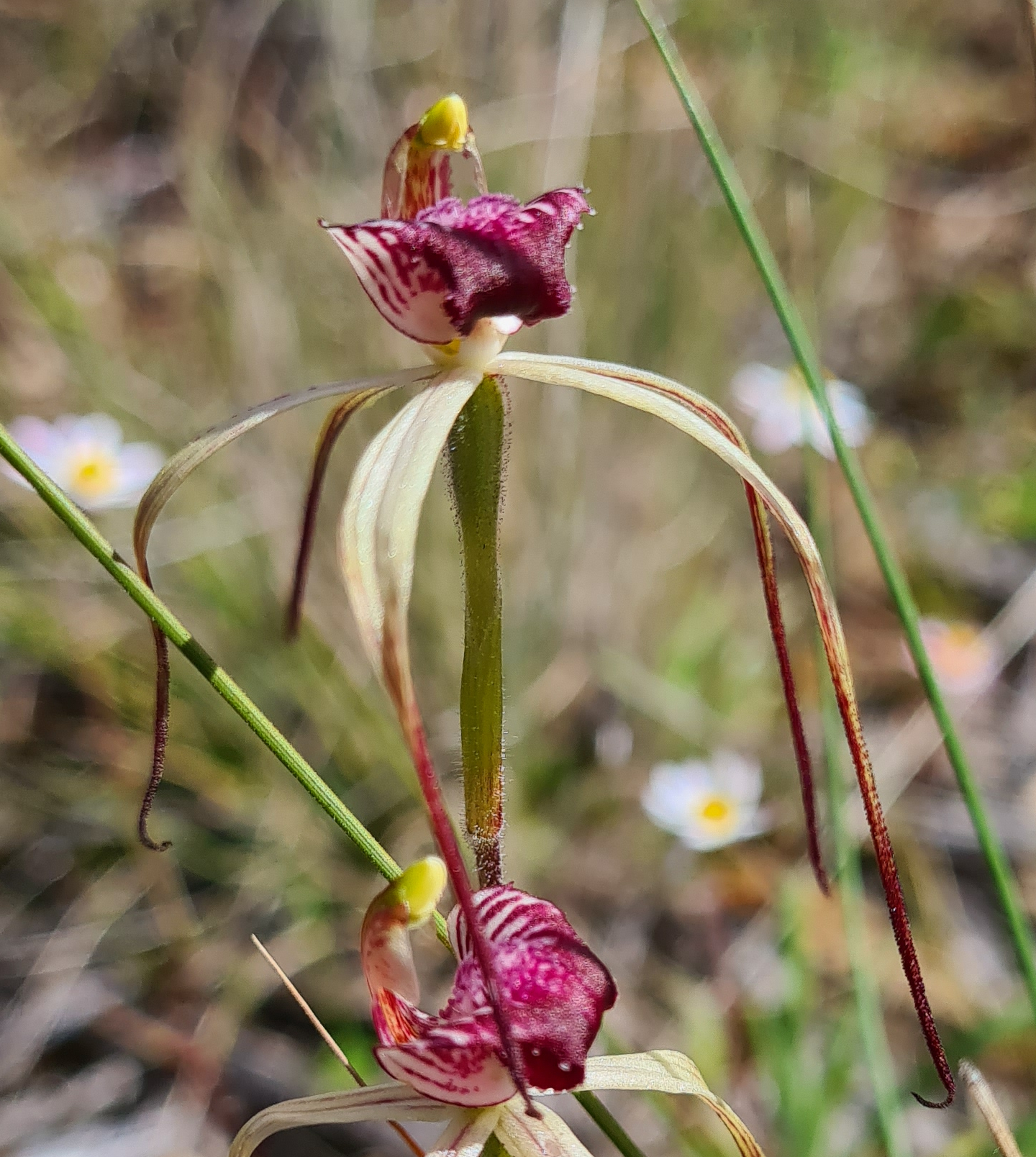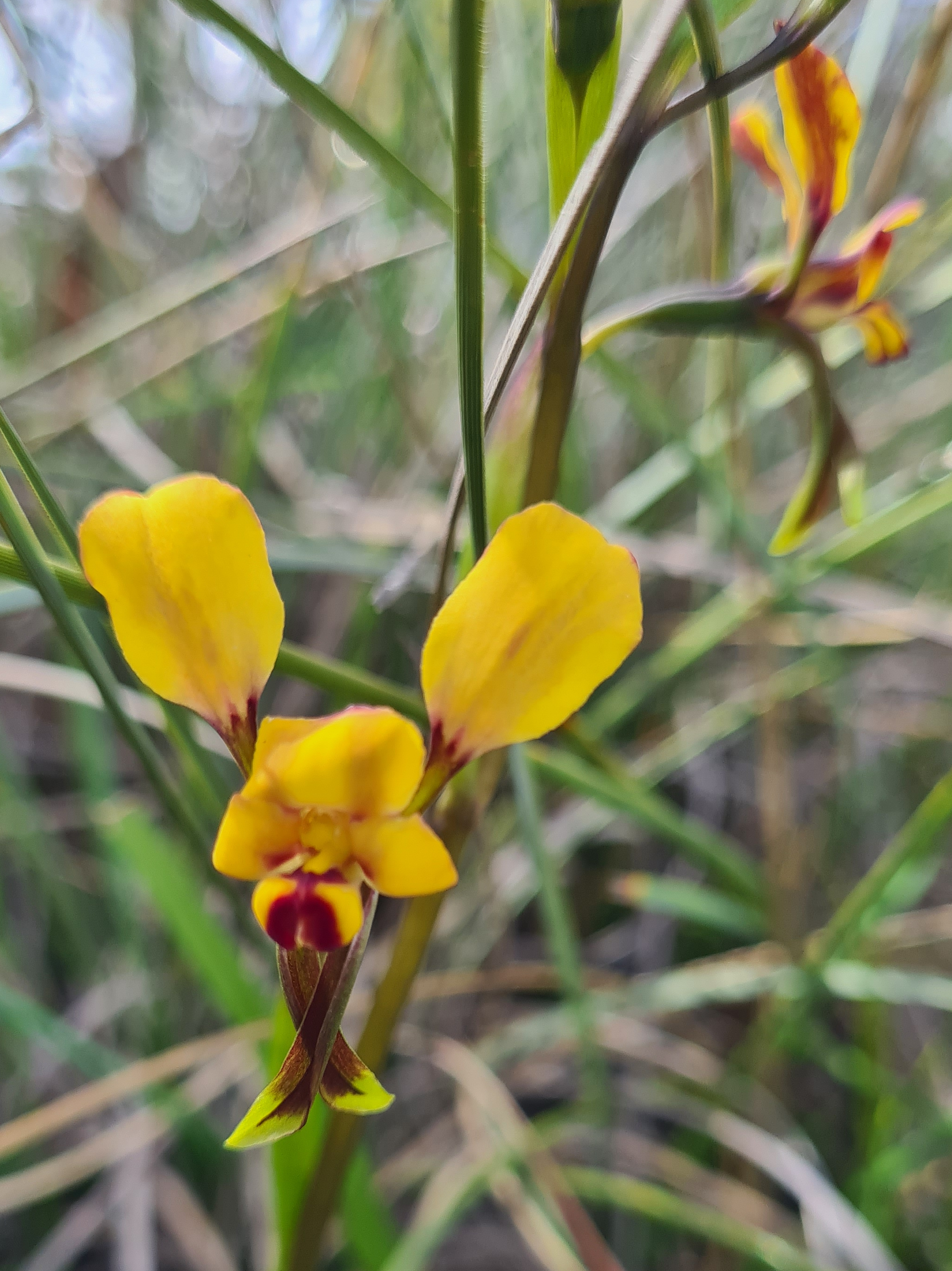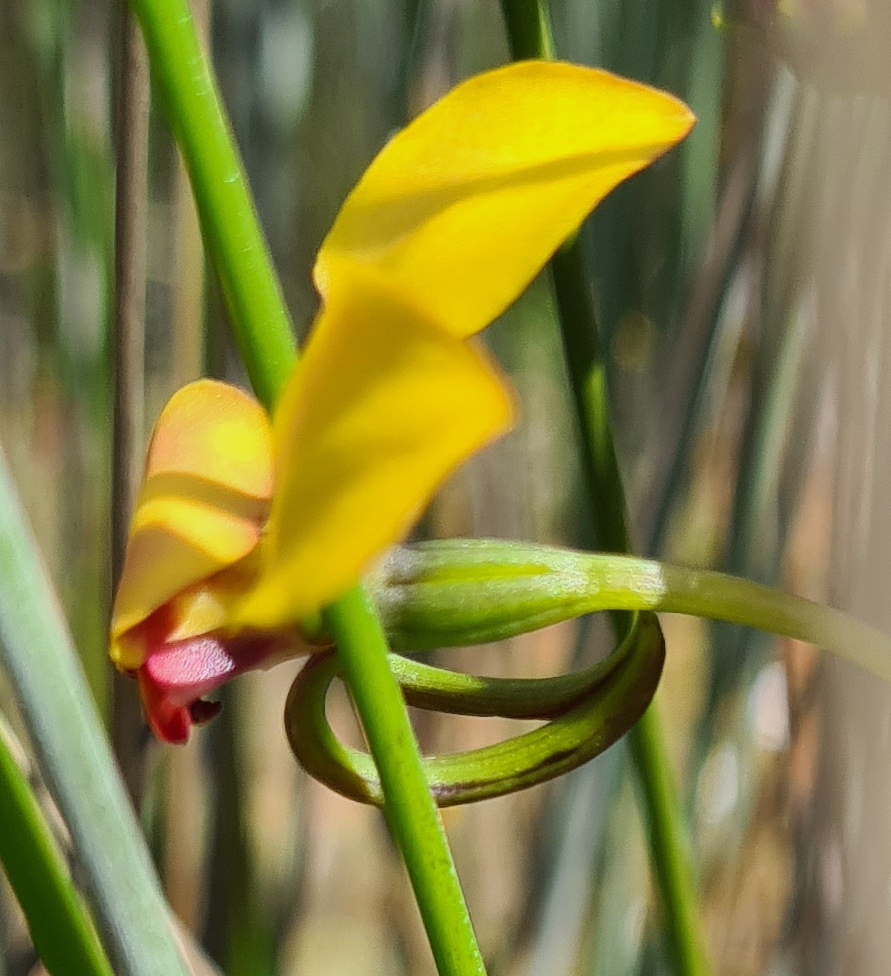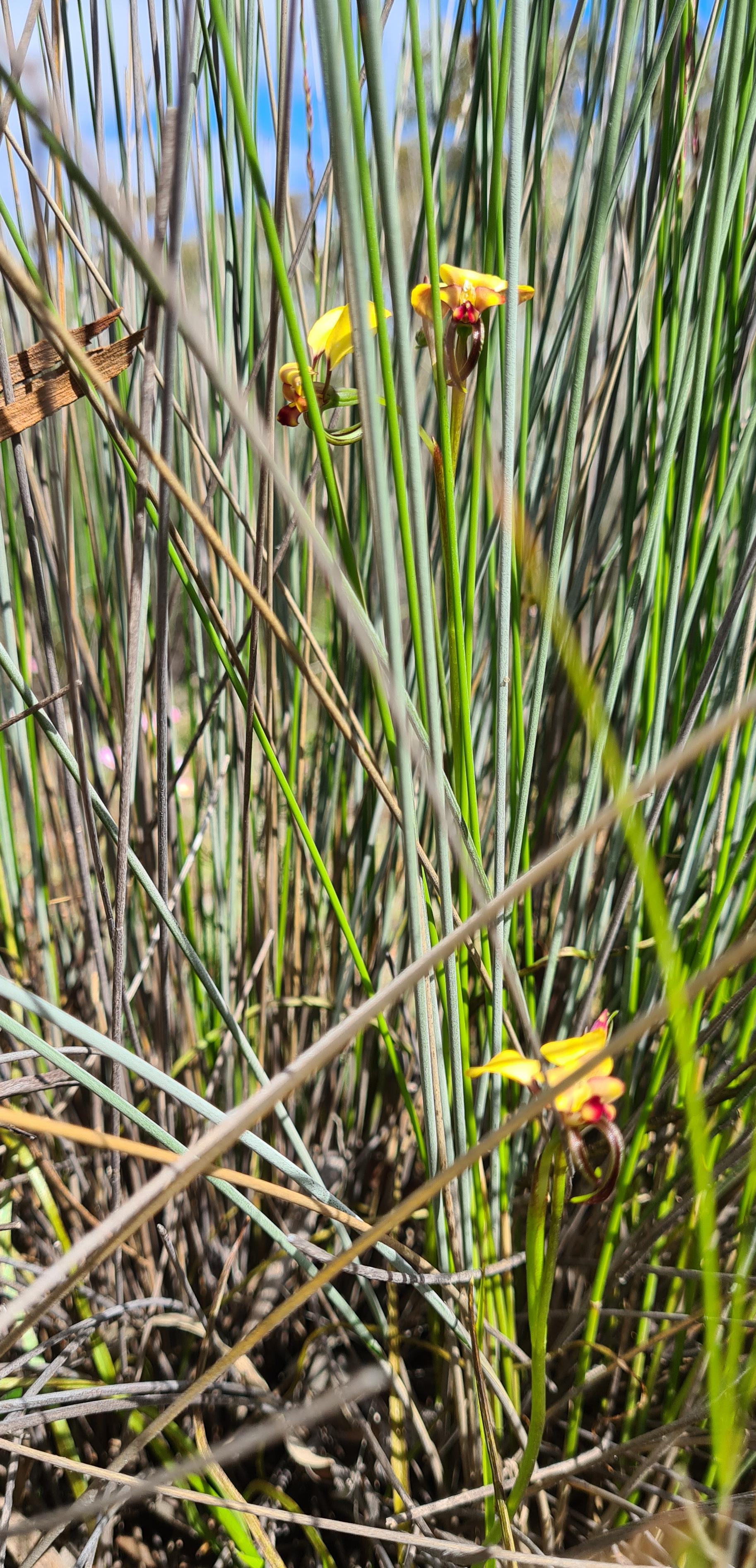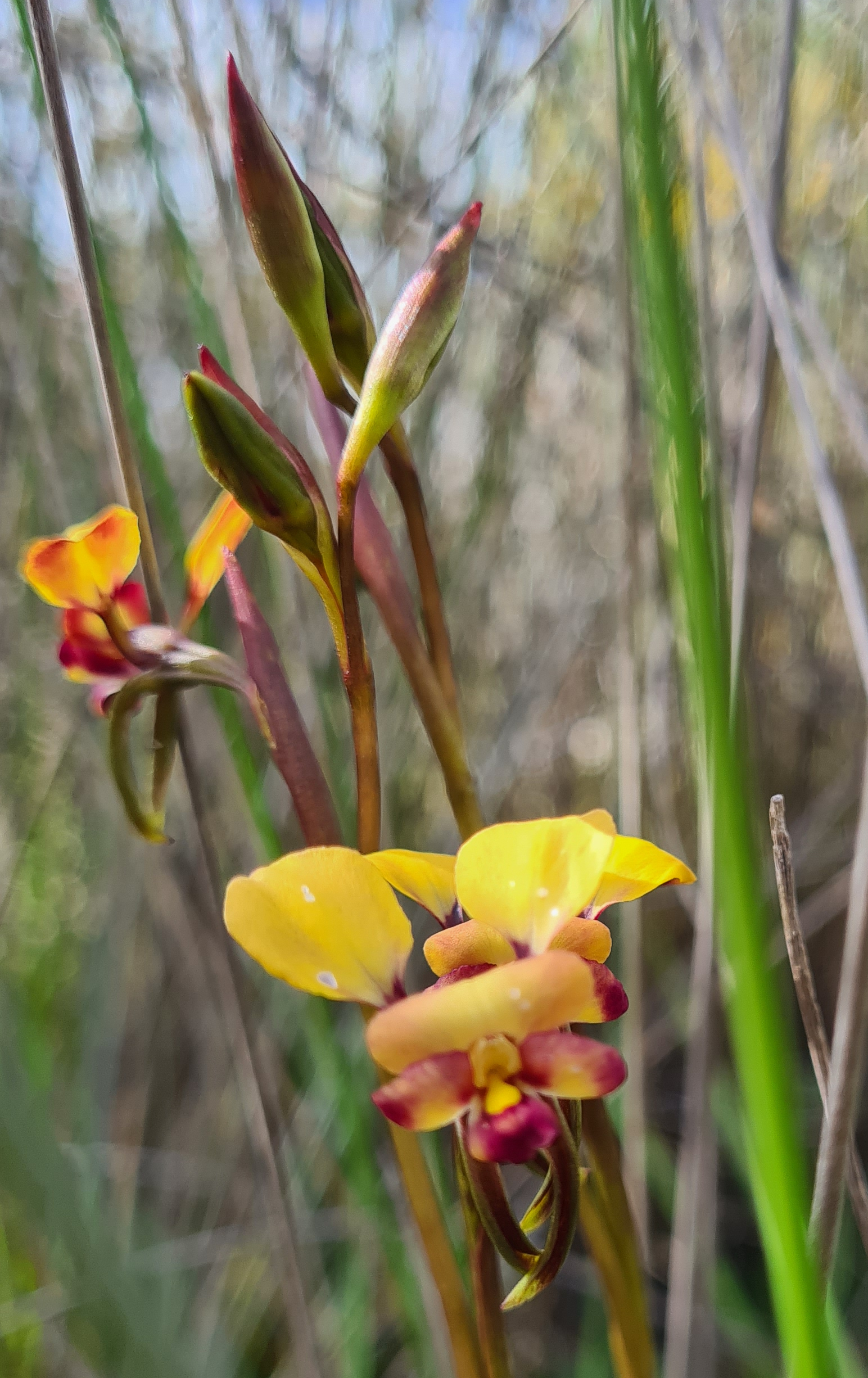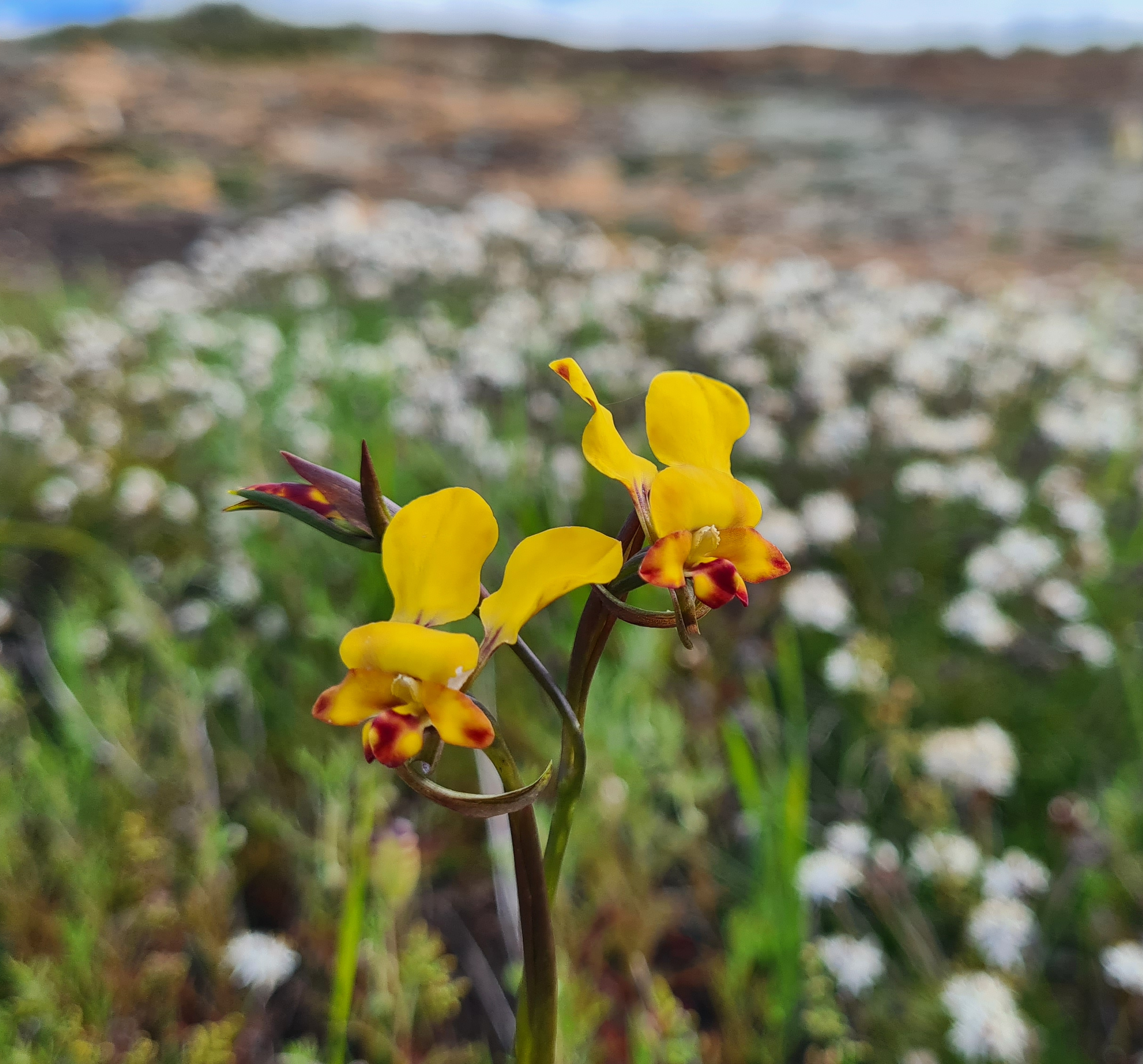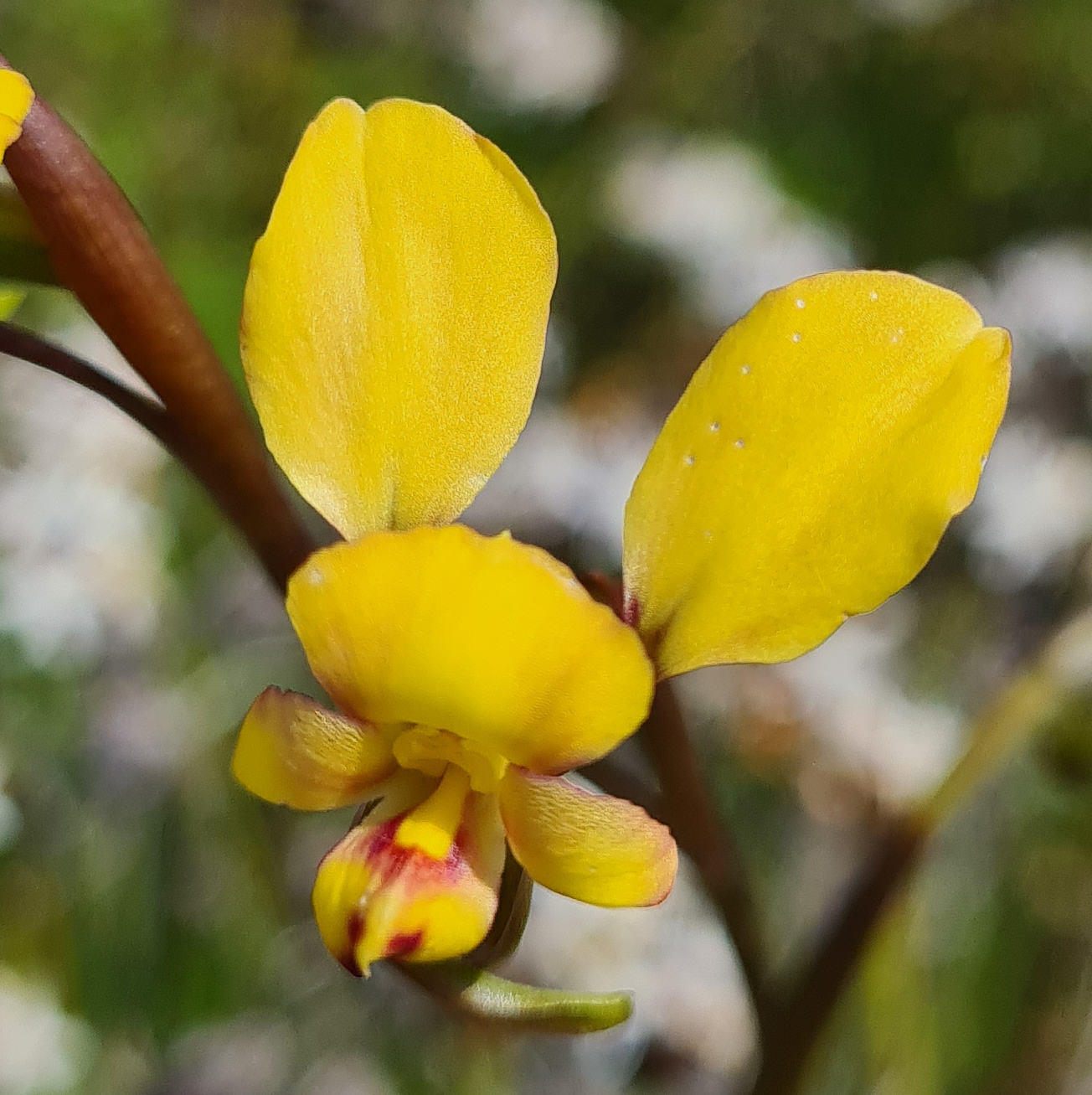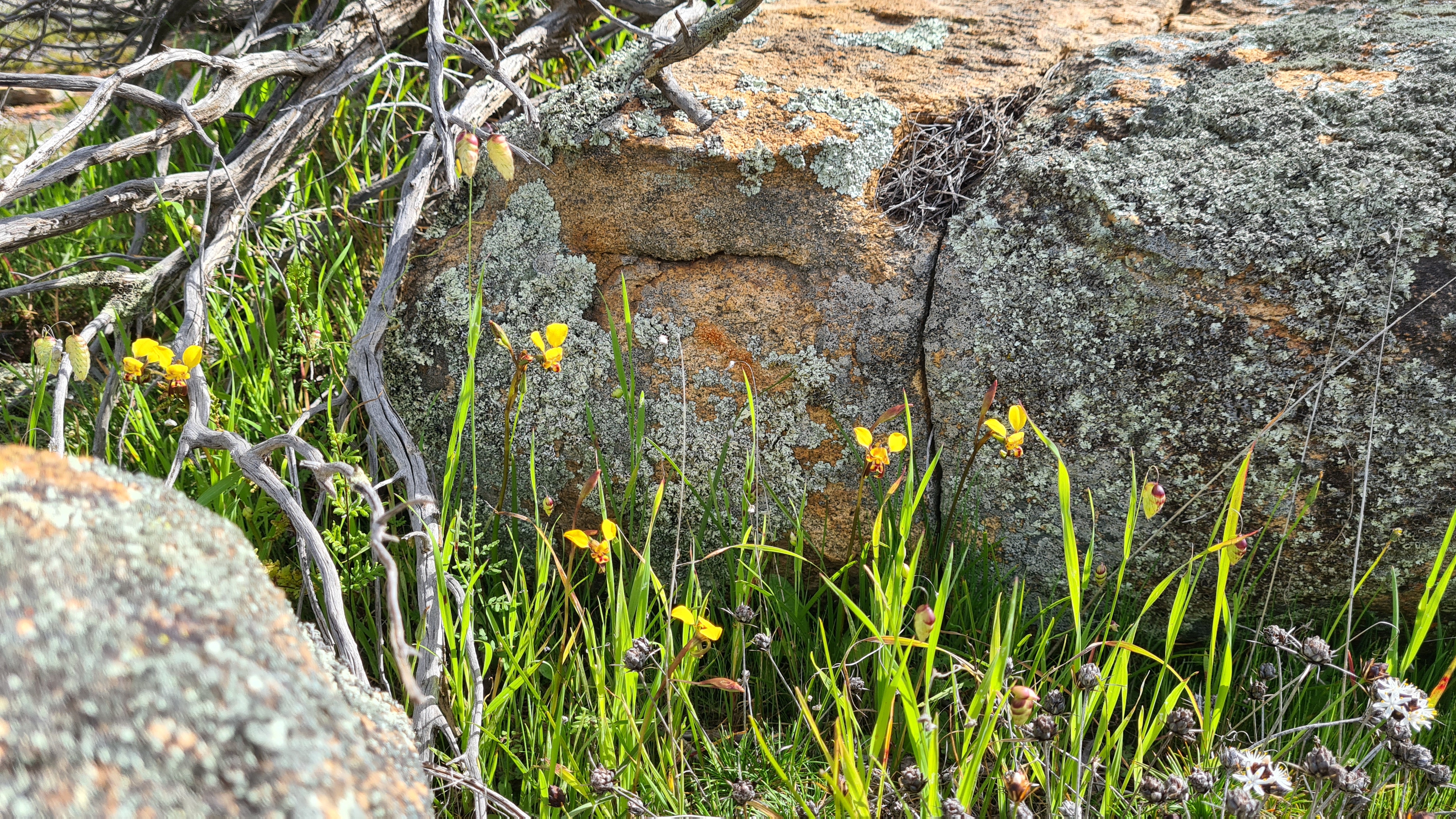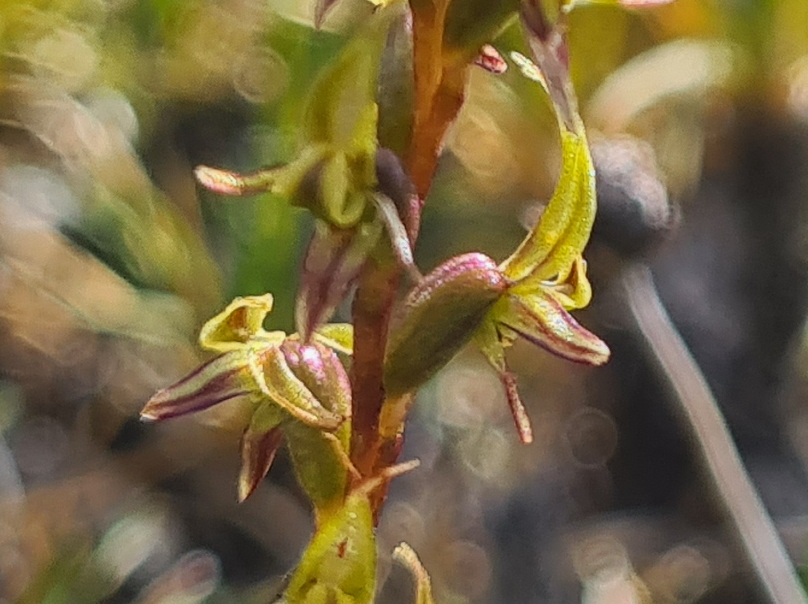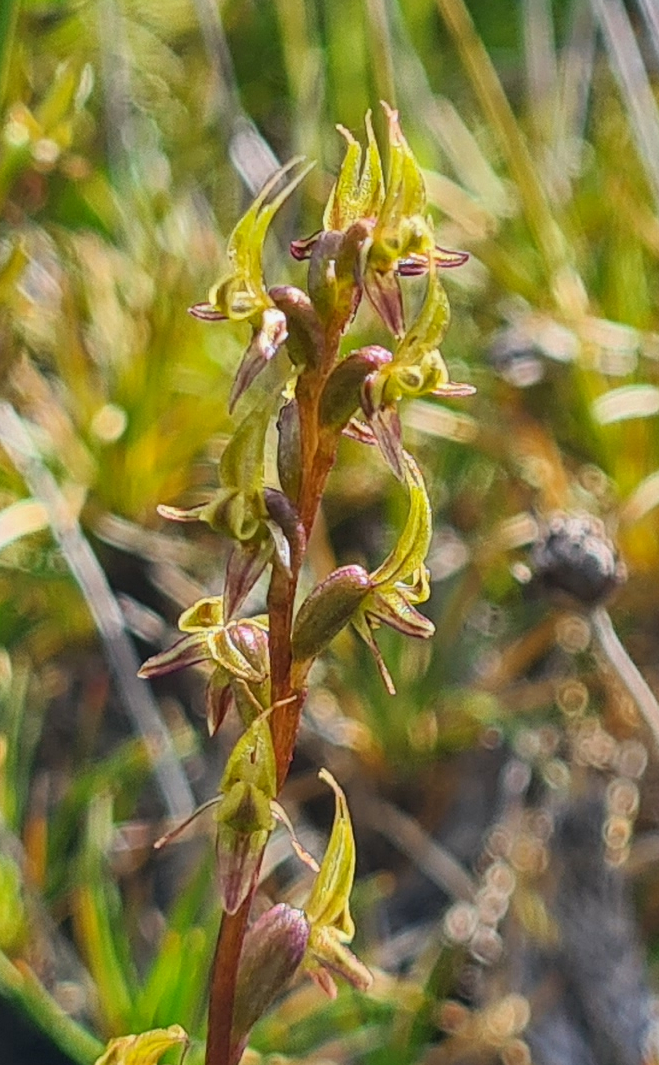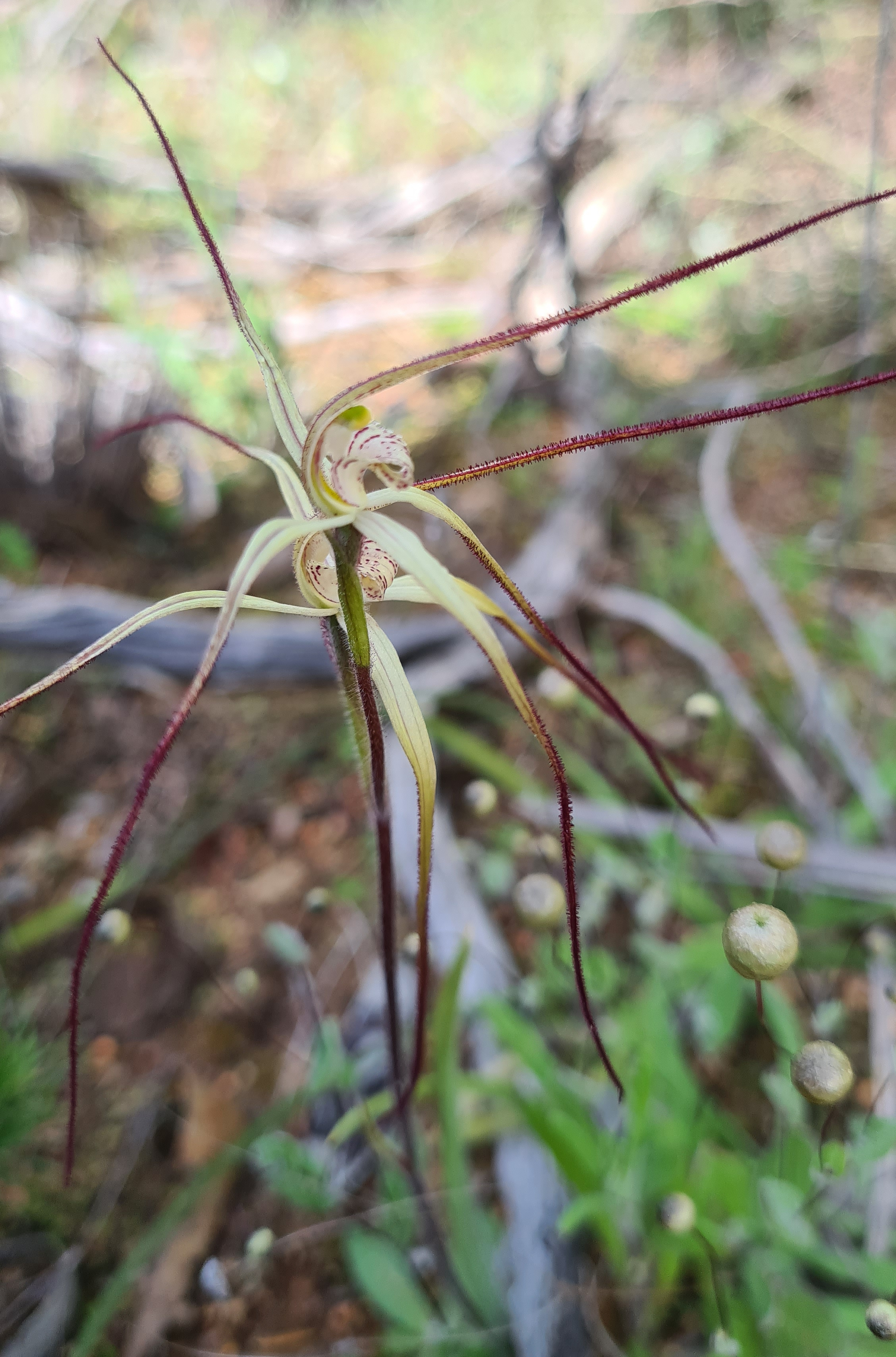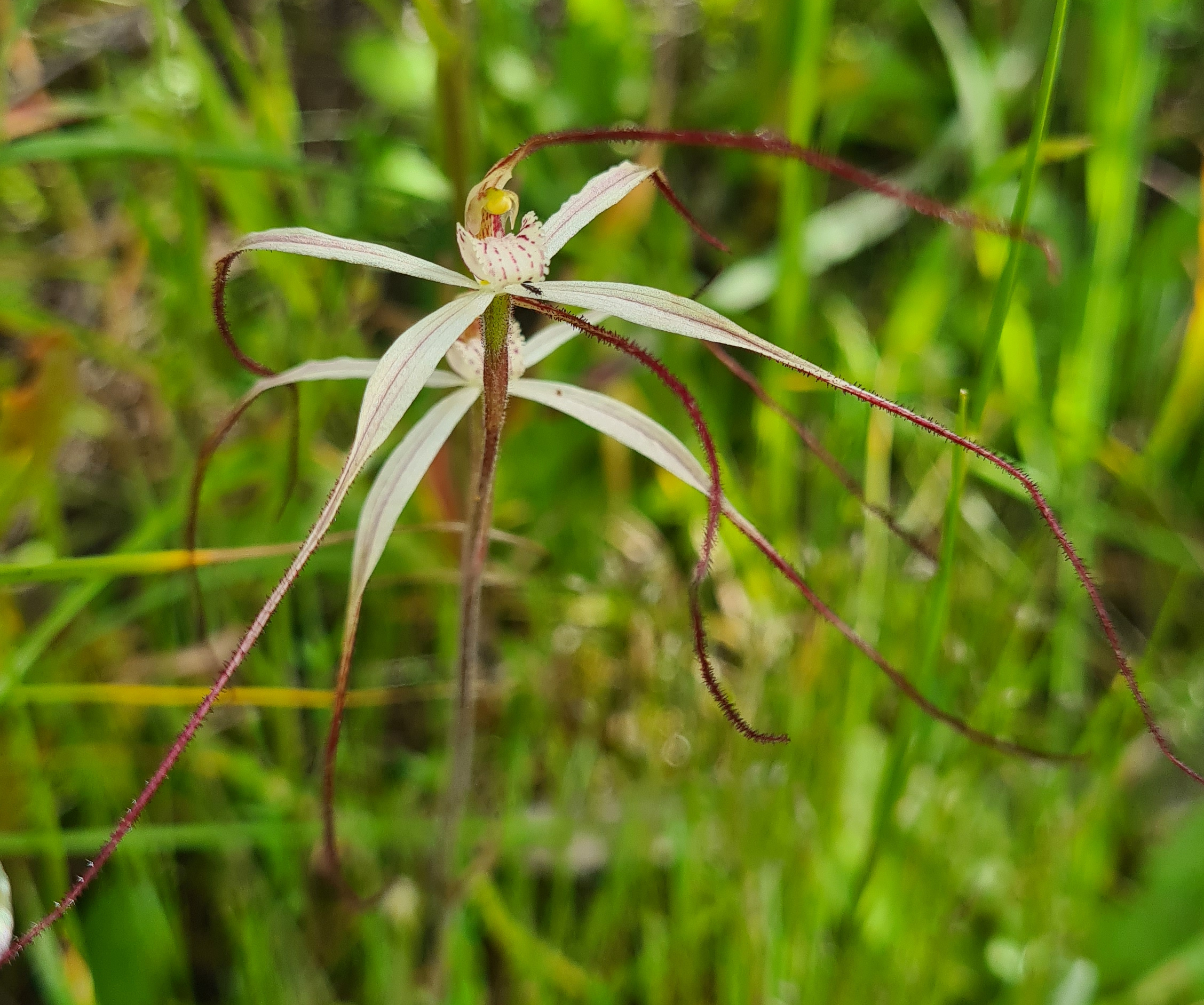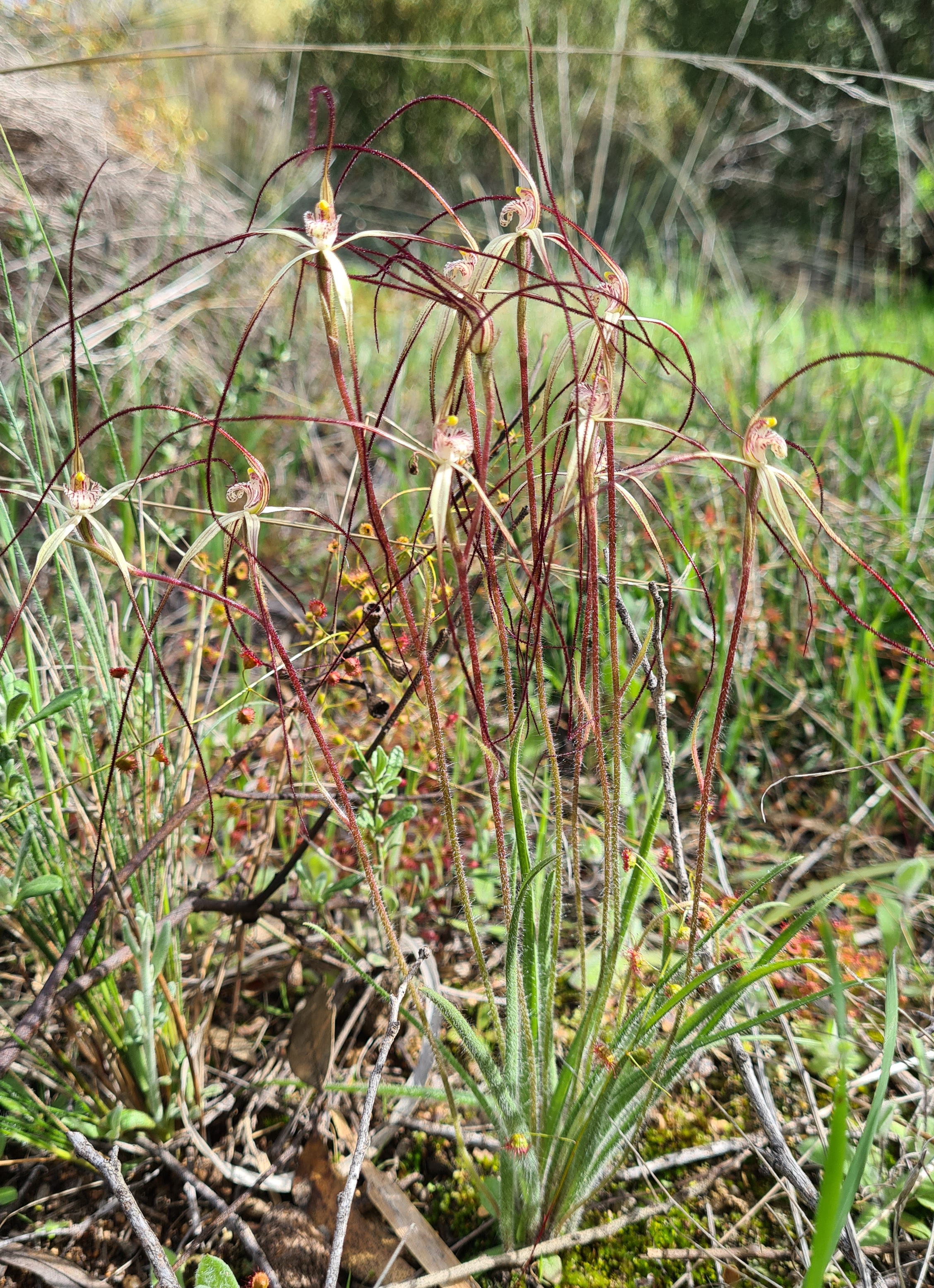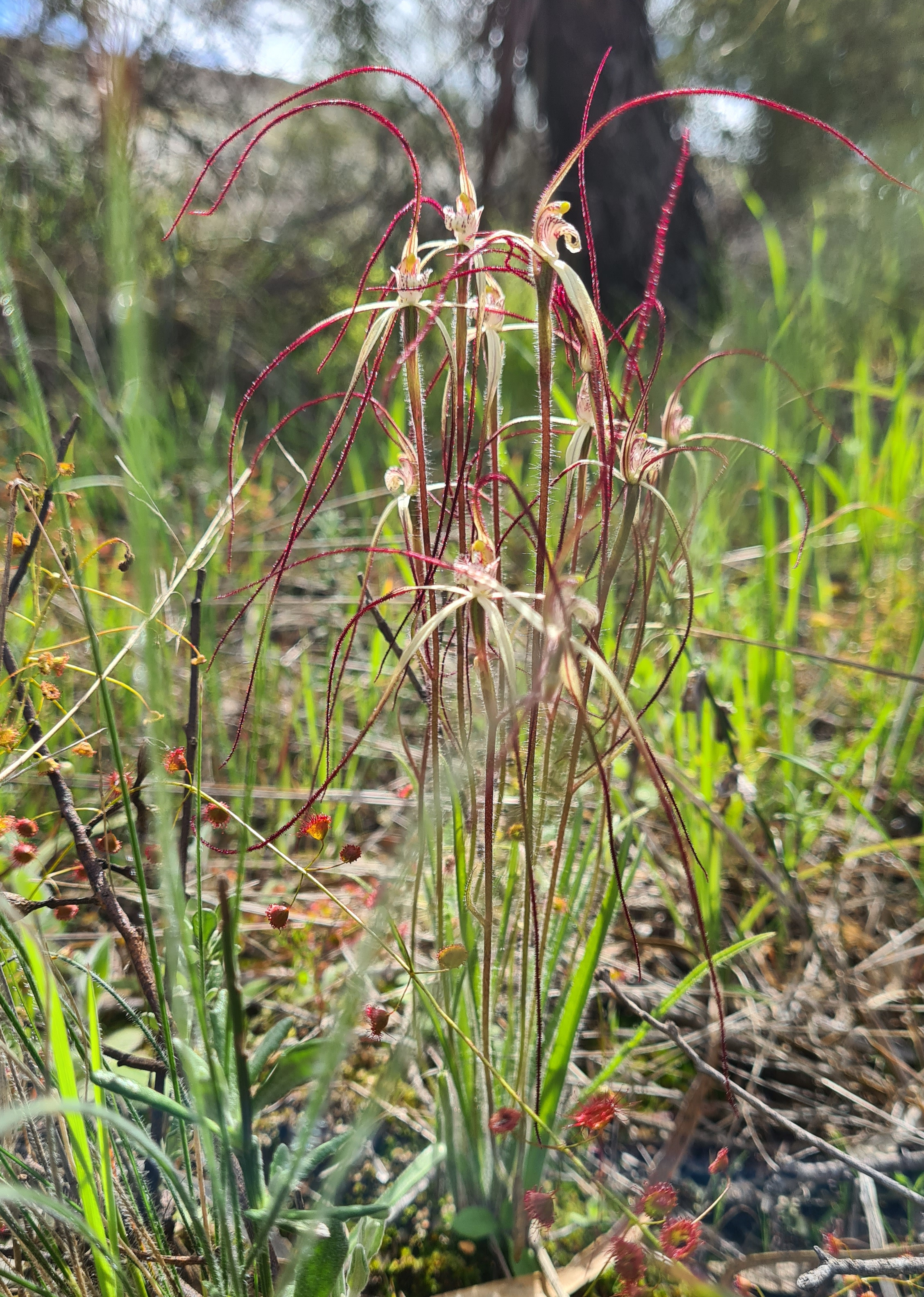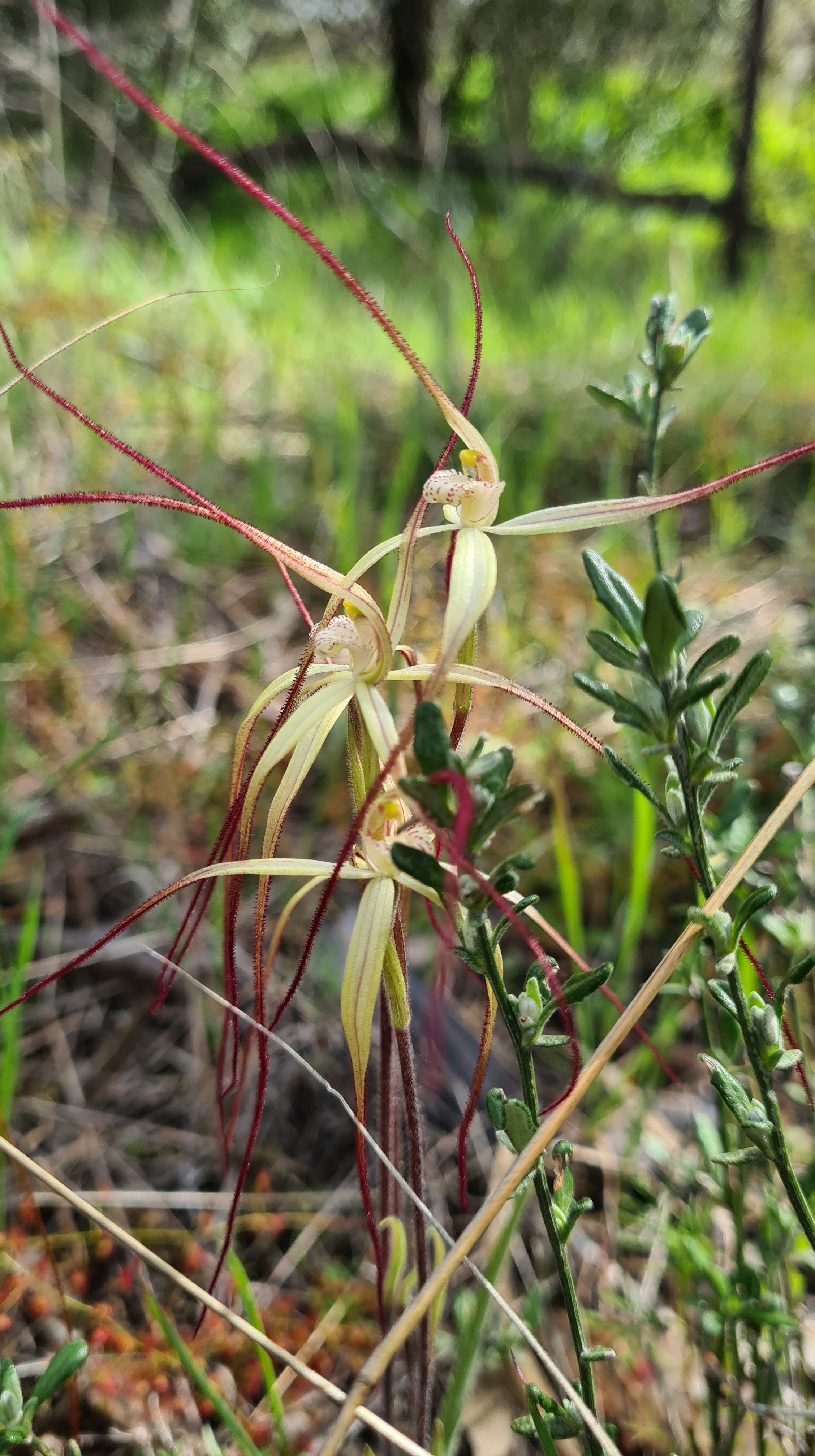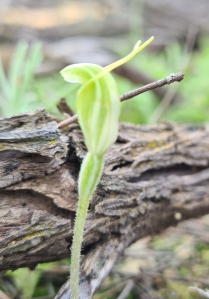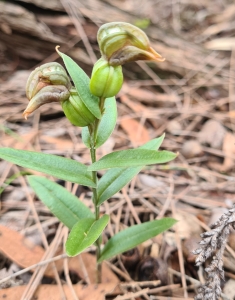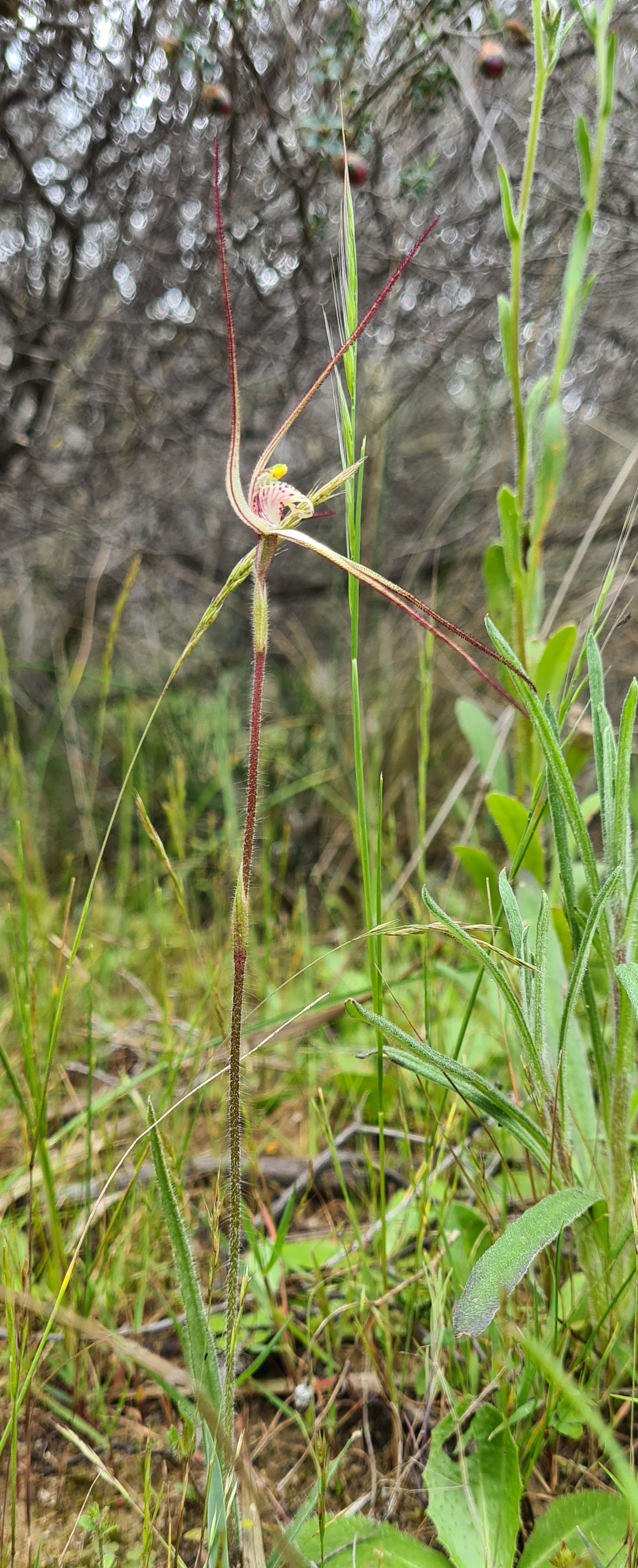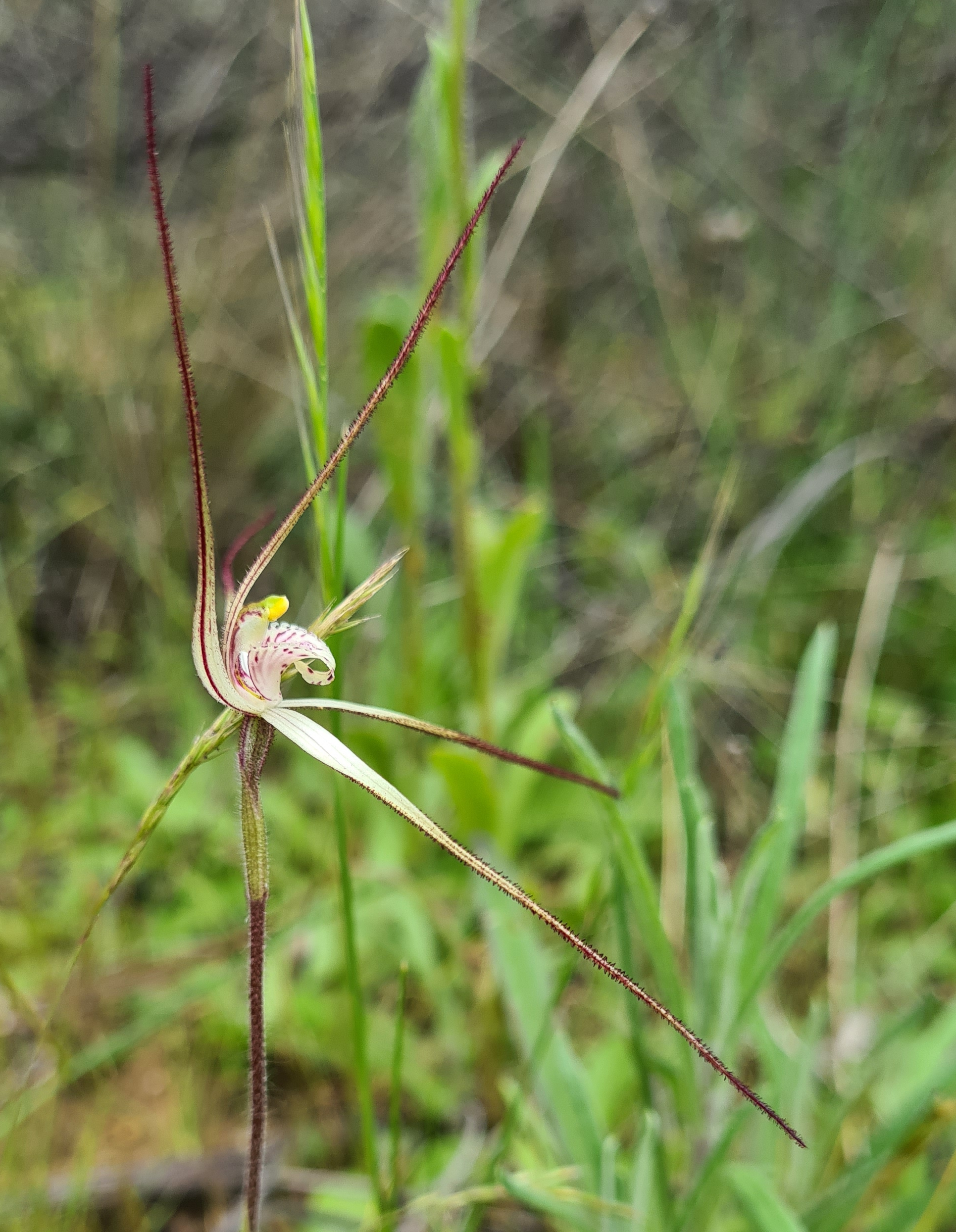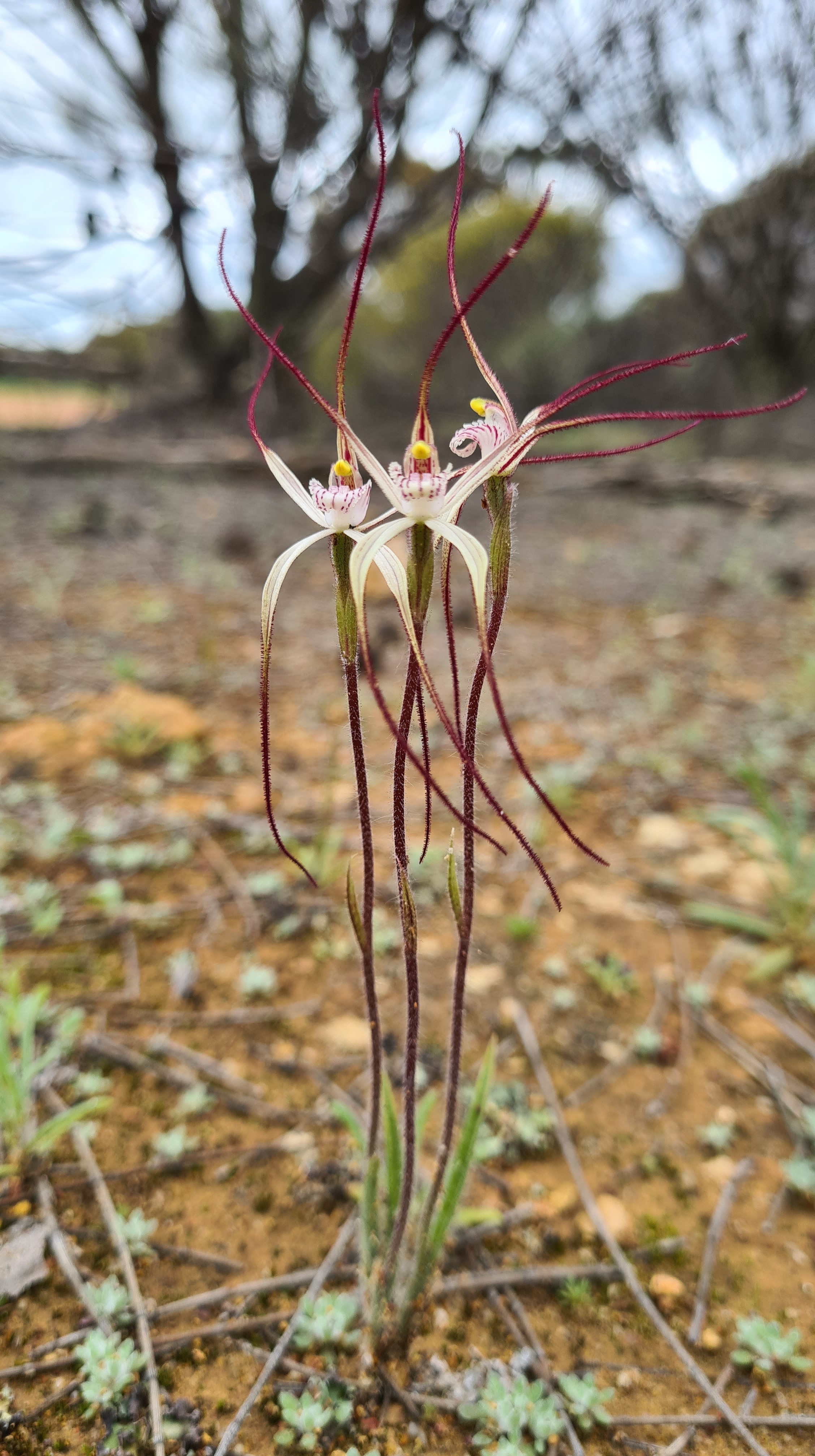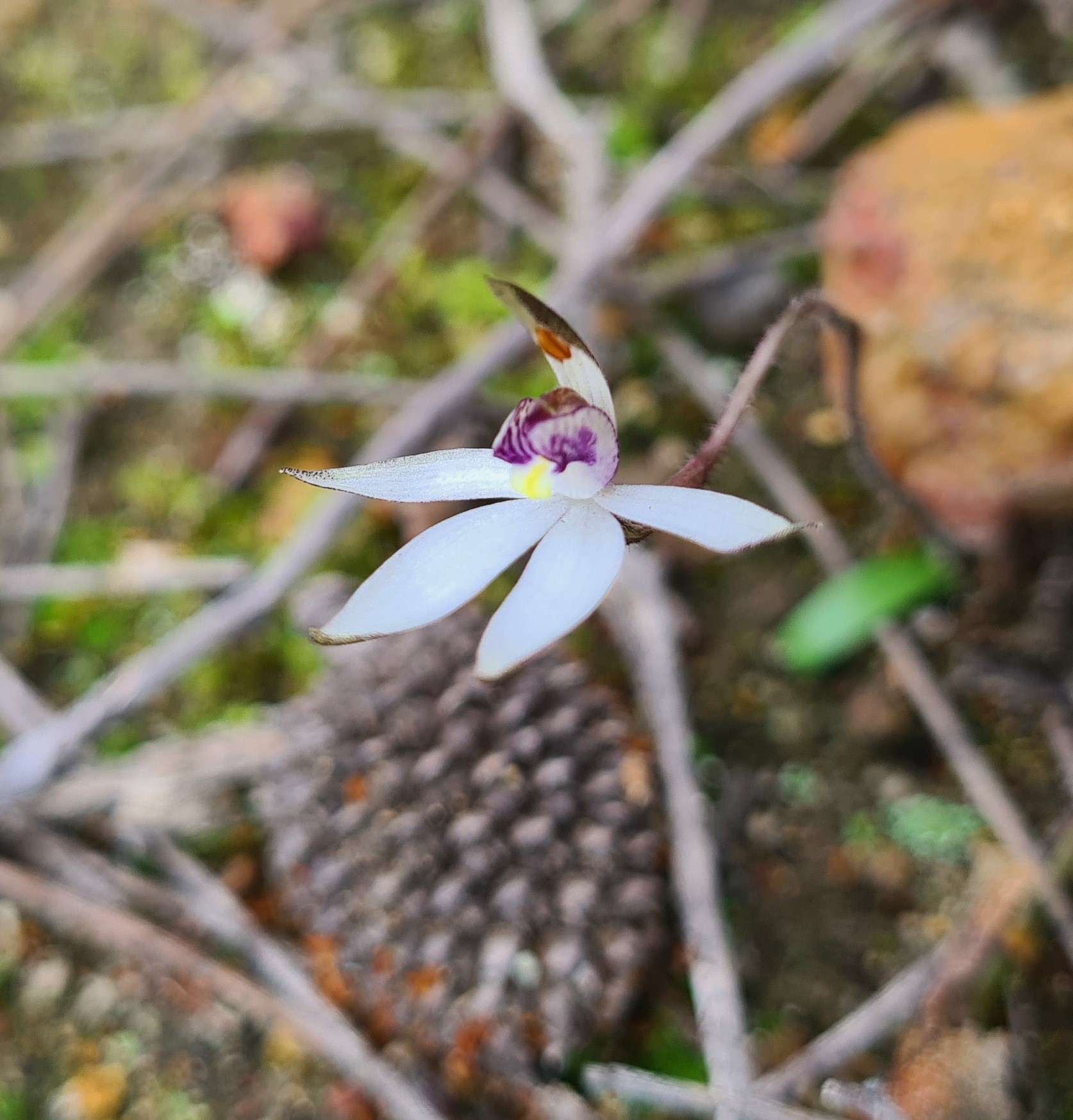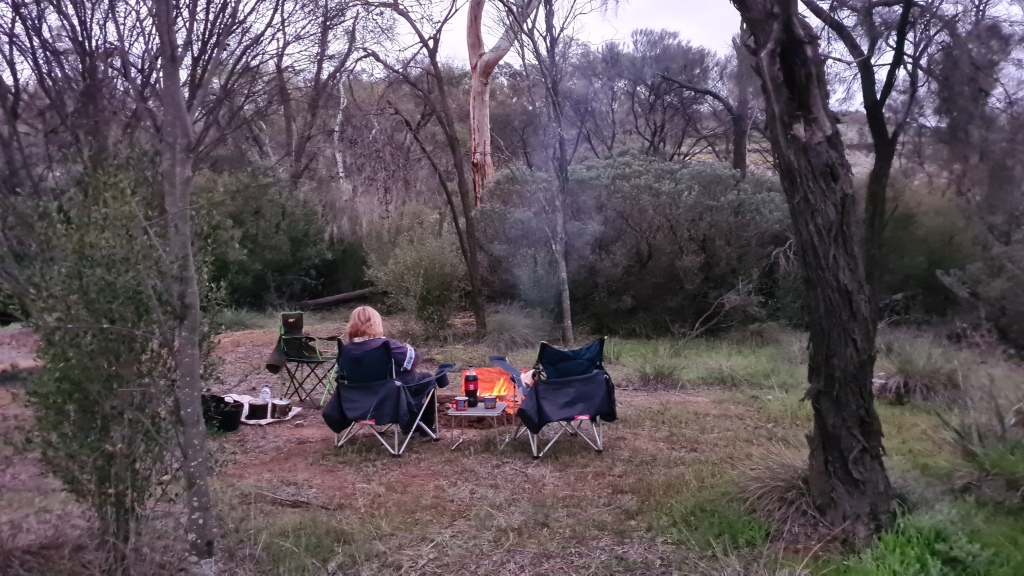What better way to spend a beautiful sunny spring September day that to go exploring for orchids. A decision needs to be made on which direction: North, East, West or maybe a combination.
East wins the day, so off we head directly to Condingup townsite, as we wanted to see if the Drakaea leaves had produced orchids. We were in luck, as the King-in-his-carriage (Drakaea glyptodon) was in flower. These interesting looking orchids are found flowering from Eneabba to Esperance during the months of Aug, Sept and Oct. Condingup is in the Shire of Esperance and approx 70kms east of the Esperance townsite.
More orchids from different genera are found in this location as well. Caladenia is represented by 3 different species. Firstly, the Esperance white spider orchid (Caladenia longicauda subsp. crassa) is found. As the name suggests this orchid ranges from Bremer Bay to Israelite Bay, so includes a vast area of the Esperance shire. Then the equally large Heberle’s spider orchid (Caladenia heberleana) which ranges between Augusta and Cape Arid, is found scattered around. A single specimen of the Western wispy spider orchid (Caladenia microchila) with a wonky labellum is the last species found. These smaller spider orchids are found over a much wider range, from Kondinin and Madura.
Next, we found various orchids, each representing their genus. First up the Purple enamel orchid (Elythranthera brunonis) which ranges from Kalbarri and Israelite Bay. Then the Red beaks (Pyrorchis nigricans) which ranges from Shark Bay to Israelite Bay and finally the Common bee orchid (Diuris decrementa) which ranges from Perth to east of Esperance.
Next location checked is one our spots along Parmango Road, a few clicks east of Condingup. Parking up the Triton, we go for a quick look and find some Common bee orchids and a few Heberle’s spider orchid, which were both located back in Condingup previously.
Not a hugely fruitful location, so we move up a few hundred metres to another favoured location and immediately encounter many more orchids. First up are more Common bee orchids, in good numbers here and further along the track.
Luckily some new species for the day are encountered as well. First up is the Jug orchid (Pterostylis recurva) which is a widespread orchid, being found from Geraldton to Israelite Bay. Then the much smaller Zebra orchid (Caladenia cairnsiana) is found, with these orchids being found between Lancelin and Esperance. Another new species for the day is the ever popular and spectacular Cowslip orchid (Caladenia flava subsp. flava) which is one of the most, if not the most widespread orchid in WA. Including the 4 subspecies, it is found south of the line Shark Bay to Israelite Bay. Then a very local new species is found, the Esperance king spider orchid (Caladenia decora). These orchids are found between Bremer Bay and Cape Arid.
Other new species for the day include the Dancing spider orchid (Caladenia discoidea) and the Lemon-scented sun orchid (Thelymitra antennifera) which both range from north of Geraldton to Israelite Bay. Then some others found previously today are found again, including Red beaks, the Purple enamel orchid and the Western wispy spider orchid.
This was a much better location, with 10 species found, however we need to keep moving. So off to a new location, along Fisheries Road in Howick. We drive slowly down the track and occasionally spy an orchid, at which time we have a scout around for more orchids, before moving on again. This location proves rather fruitful with 8 species found, including 2 new ones for the day. First up I will mention new species found; Beautiful donkey orchid (Diuris pulchella) which is an easterly occurring orchid, found between Salmon Gums, Esperance and Balladonia. The smaller Western tiny blue orchid (Cyanicula aperta) is also found over a larger easterly range, Dumbleyung to Mt Ragged.
The other orchids found at this location were the Cowslip orchid, Western wispy spider orchid, Esperance king spider orchid, Lemon-scented sun orchid, Jug orchid and Esperance white spider orchid.
Now our final location for the day, is one of our favourite spots. The area around Boyatup Hill never disappoints. I will start with the new species for the day, then confirm the findings of those previously found earlier today, as also being located this far east of Esperance.
The Custard orchid (Theymitra villosa) is a nice yellow coloured sun orchid which is found flowering between Northampton and Israelite Bay. Then we have the equally brightly coloured Pink candy orchid (Caladenia hirta subsp. rosea) which flowers slightly further north in Kalbarri then south to Israelite Bay.
Another 2 new species for the day include the Rabbit orchid (Leptoceras menziesii) which is another orchid that ranges from Israelite Bay, but only to Geraldton this time and the Common spider orchid (Caladenia varians) which is listed between Kalbarri and Esperance. The maps do show occurrences east of Esperance; however, I have posted images on iNaturalist asking fellow Citizen Scientists to assist me in identification.
Now to list the orchids previously found at earlier locations, that were also found around Boyatup hill. Purple enamel orchid, Lemon-scented sun orchid, Esperance king spider orchid, Heberle’s spider orchid, Cowslip orchid, Dancing spider orchid, Beautiful donkey orchid, Common bee orchid and a lone fertilised Jug orchid. EDIT: Fellow citizen scientists from my iNaturalist post have advised the Bee orchid (Diuris laxiflora) is the correct ID, so it is not the Common bee, which makes this another species found for the day.
Now you can see why this location is a favourite of ours. With at least 13 species found with a white variant of the Pink candy orchid being a special find. Well, it has been a long day, and we have an hour or so drive home. Time to reflect on the 17 EDIT: 18 species found today, making east of Esperance a special spot for orchids.
















































































